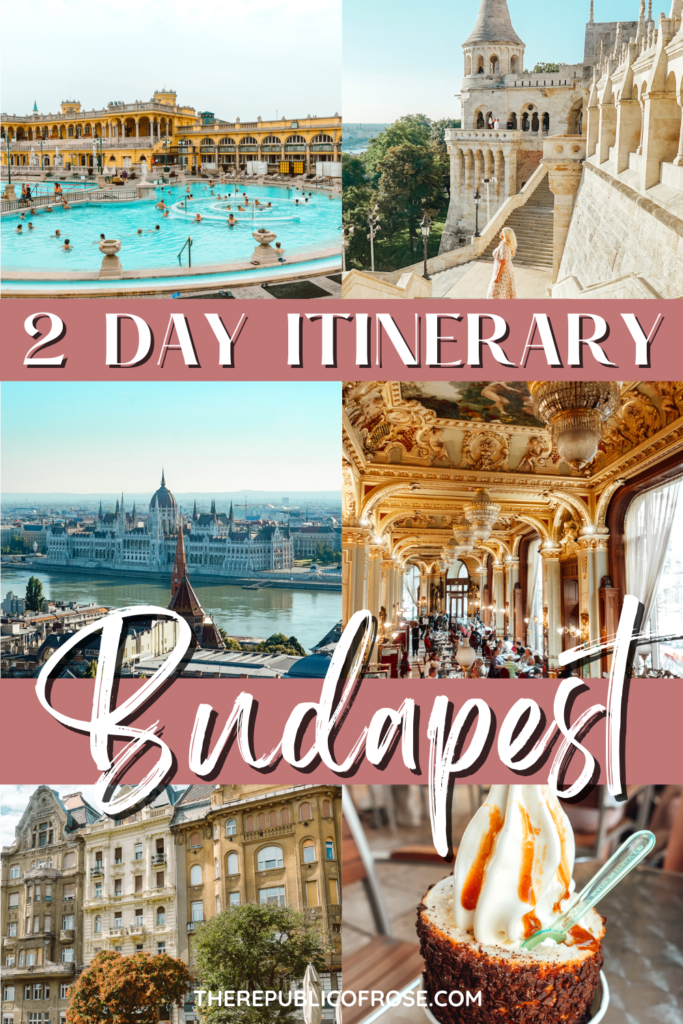
Planning a trip to Hungary and looking for the perfect Budapest itinerary? This 2 day itinerary covers all of the best sights and things to do in the Hungarian capital city!
Budapest is known for its stunning architecture, fascinating history, scenic river vistas, healing thermal baths, nightlife, and so much more. While it embodies central European charm, it’s also a unique city with its own quirks, culture, and backstory.
I was very excited to visit Budapest (and Hungary!) for the first time over the summer and had a blast exploring this vibrant city. Planning out this itinerary, I was wondering if I would be able to get a good feel for the city in just two days… And in the end, I felt like I was able to see many of the major highlights and experience much of Budapest’s charm, culture, and cuisine!
So, here’s the ultimate Budapest itinerary in 2 days!
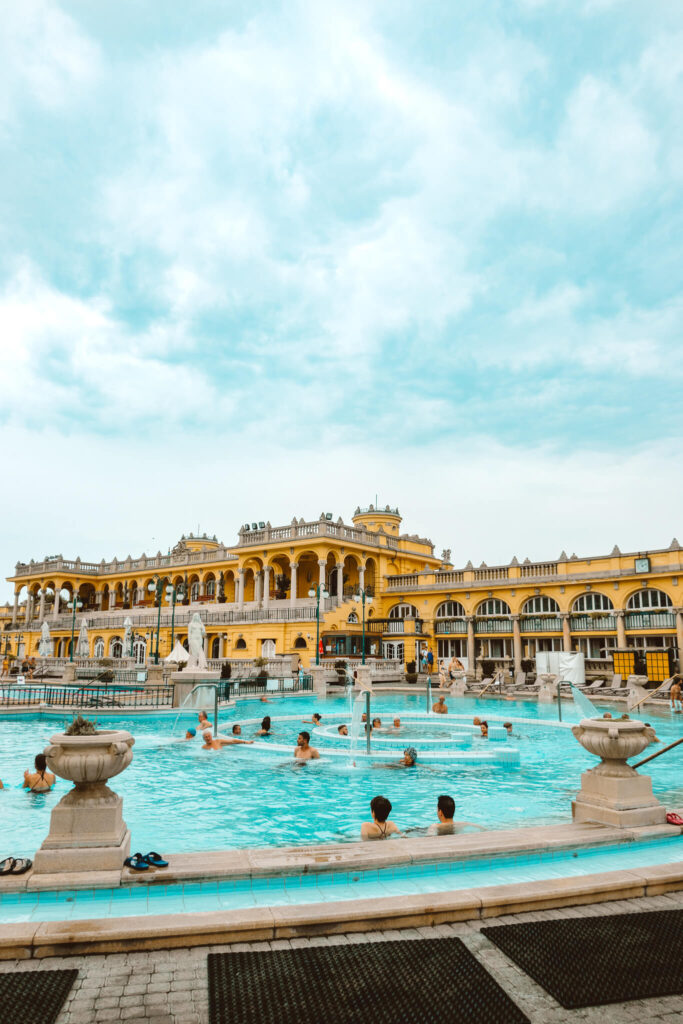
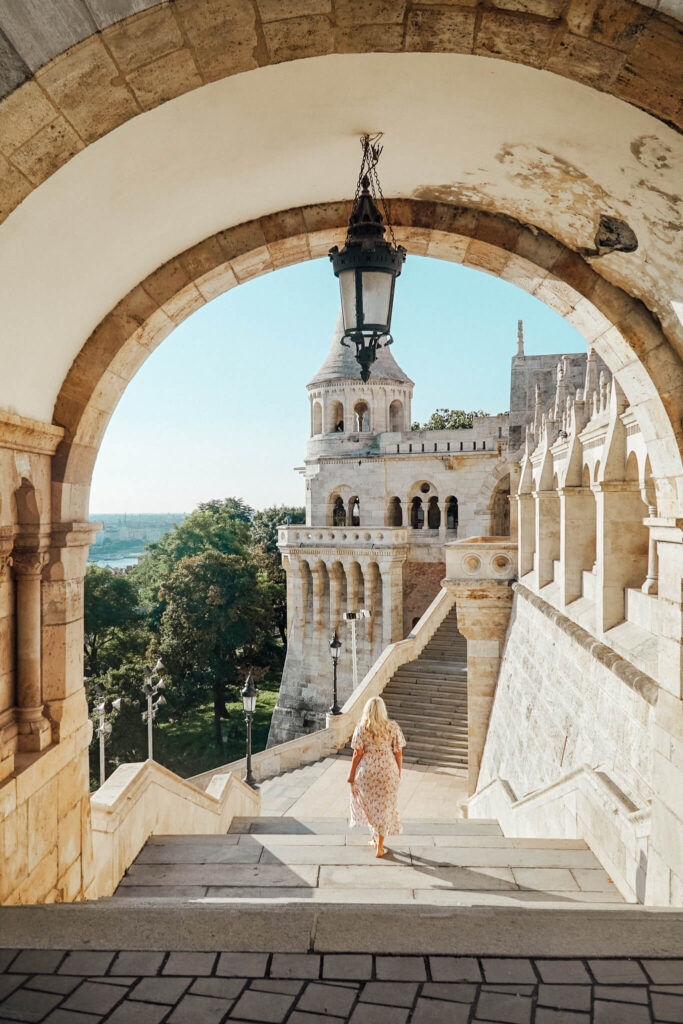
About Budapest
Budapest is the capital city of Hungary and is renowned for its rich history, architectural landmarks, scenic beauty, and unique culture. And along with Prague and Vienna, Budapest is a very popular city destination for travelers in central Europe… And for good reason!
The city has a vibrant cultural scene with tons of museums — like the Hungarian National Museum and the Museum of Fine Arts — galleries, theaters (and an opera house!), and even music festivals.
Budapest also has an incredible food scene with dining experiences ranging from market hawkers to Michelin-starred chefs. Hungarian cuisine is known for its rich flavors and hearty dishes like goulash, paprika-spiced stews, and lángos (deep-fried flatbread). The Great Market Hall is a fantastic place to explore and sample local delicacies!
And along with its delicious dining, the city is also home to a bustling nightlife scene with ruin bars (bars in abandoned buildings or “ruins”) being a very unique feature. These bars offer an eclectic atmosphere, live music, and a vibrant social scene!
Overall, Budapest’s combination of history, culture, architecture, and natural beauty makes it a must-see destination for travelers from around the world.
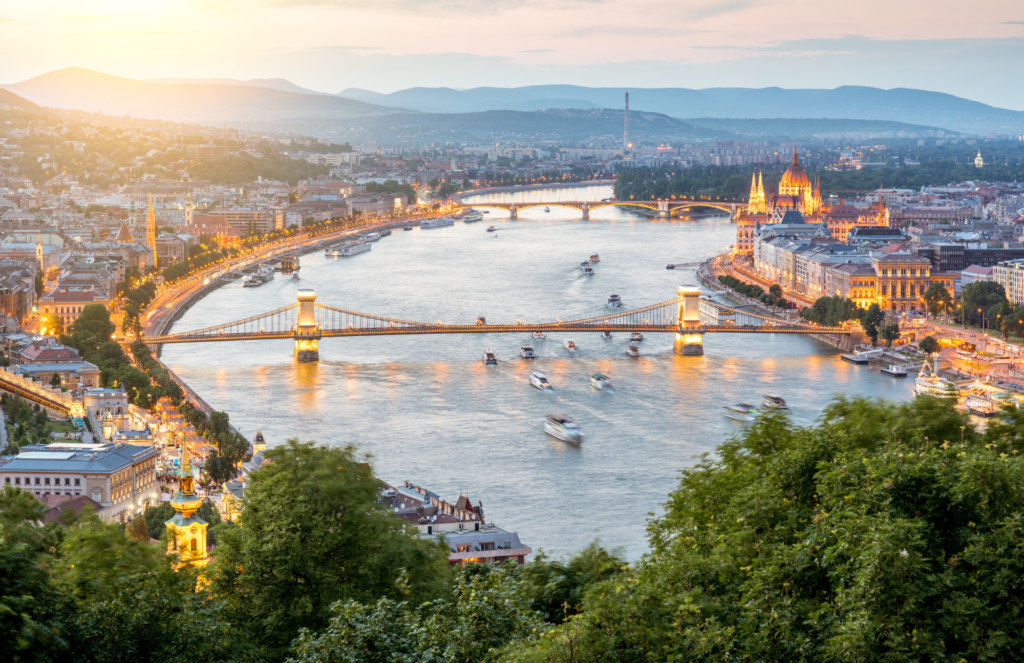
So, what’s the difference between Buda and Pest?
The city is split up into two sections, Buda and Pest, which are divided by the beautiful Danube River. These two separate sections were once individual cities but were joined together to make Budapest in 1873 and are now connected by several bridges.
Buda is very picturesque with stunning views of the city and is home to iconic landmarks like Fisherman’s Bastion, Matthias Church, and Buda Castle. It’s also has many residential areas that locals call home.
On the other hand, Pest is bustling with restaurants, shops, hotels, bars and nightlife. It’s also where you’ll find most of the tourists… But that’s because there’s so much to do in Pest!
You’ll definitely want to visit both the Buda and Pest sides of the city but will probably spend more time in Pest as that’s where most of the “action” is, as well as many hotels.
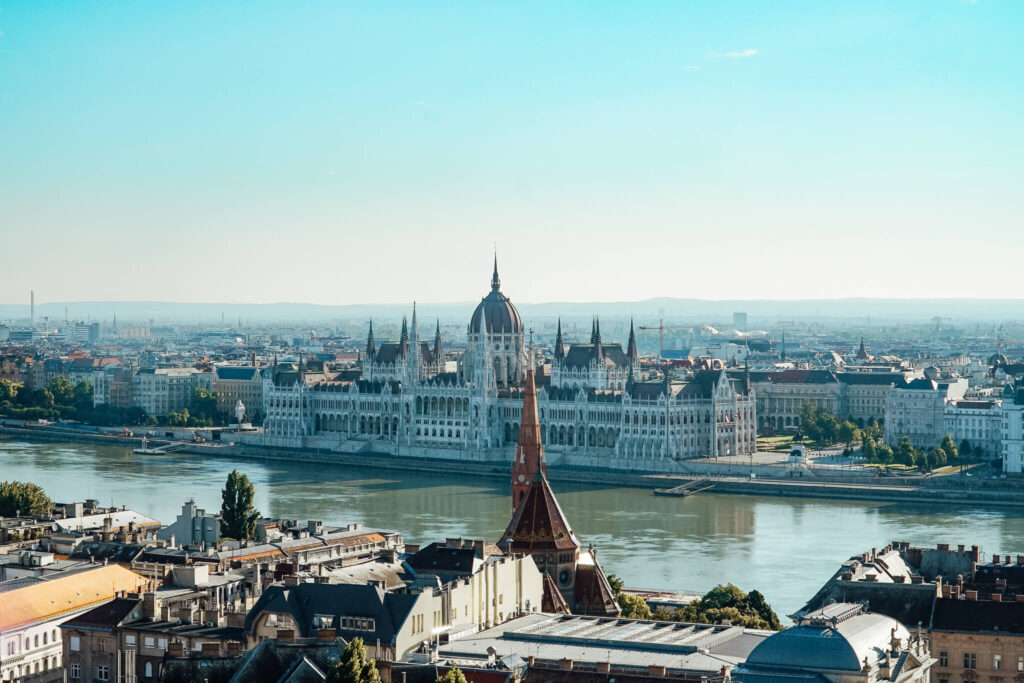
Budapest Itinerary in 2 Days
Is 2 days enough time to visit Budapest? While spending just 2 days in Budapest might feel a bit rushed, it’s still possible to cover many of the city’s highlights and get a glimpse of its beauty and culture. And this ultimate Budapest itinerary will definitely help you make the most of a short visit!
- Day 1: Fisherman’s Bastion, Matthias Church, New York Café, Szechenyi Thermal Baths
- Day 2: Rudas Baths, Central Market Hall, Váci Street, Jewish Quarter
Budapest Itinerary — Day 1
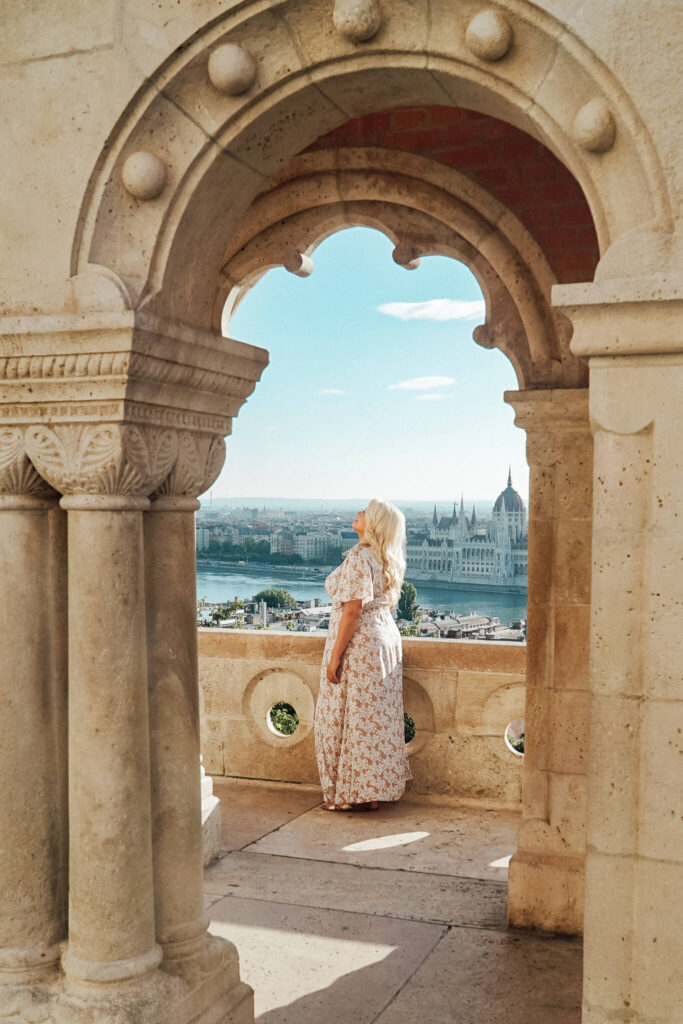
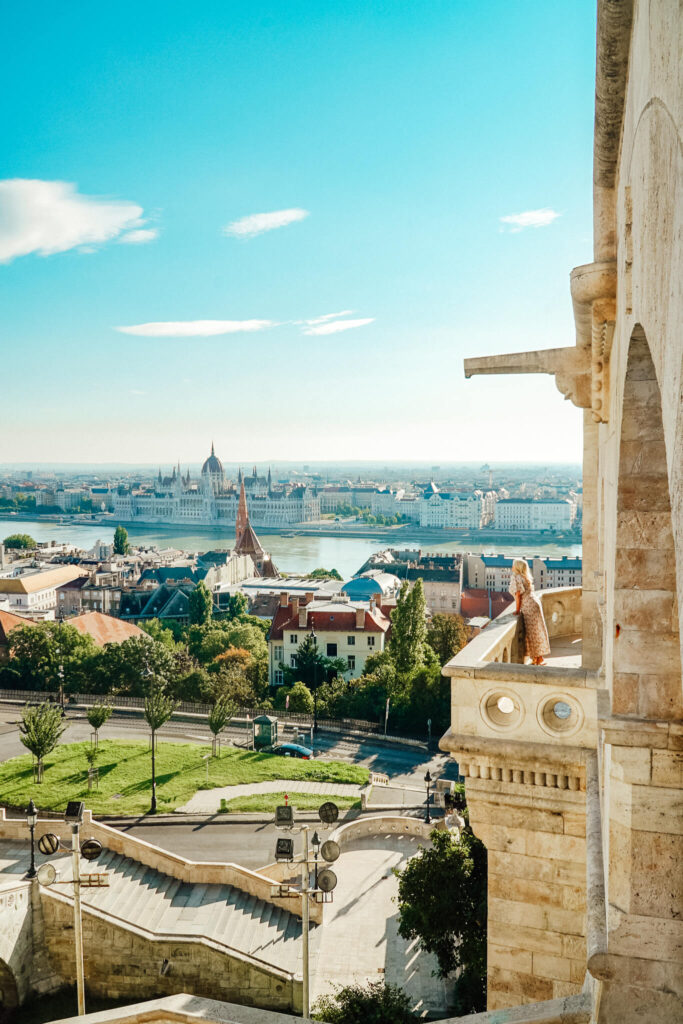
Fisherman’s Bastion
Fisherman’s Bastion is one of Budapest’s most iconic and picturesque landmarks, located in the Castle District on the Buda side of the city… And a great place to kick off the Budapest itinerary!
Built between 1895 and 1902, Fisherman’s Bastion is a neo-Gothic and neo-Romanesque terrace with fairytale-like turrets, arches, and walls. It was designed by Frigyes Schulek, an architect who aimed to create a structure resembling a medieval fortress.
Both tourists and locals visit Fisherman’s Bastion to explore its terraces and multiple viewpoints.
The white stone parapets and arches will have you feeling like you’ve stepped into a fairytale. Plus, you’ll have amazing photo opportunities and jaw-droppingly beautiful vistas of Budapest!
Since this is a popular tourist destination, I would recommend visiting early in the morning to avoid the crowds. We woke up early and it was worth it when we had the place almost to ourselves!
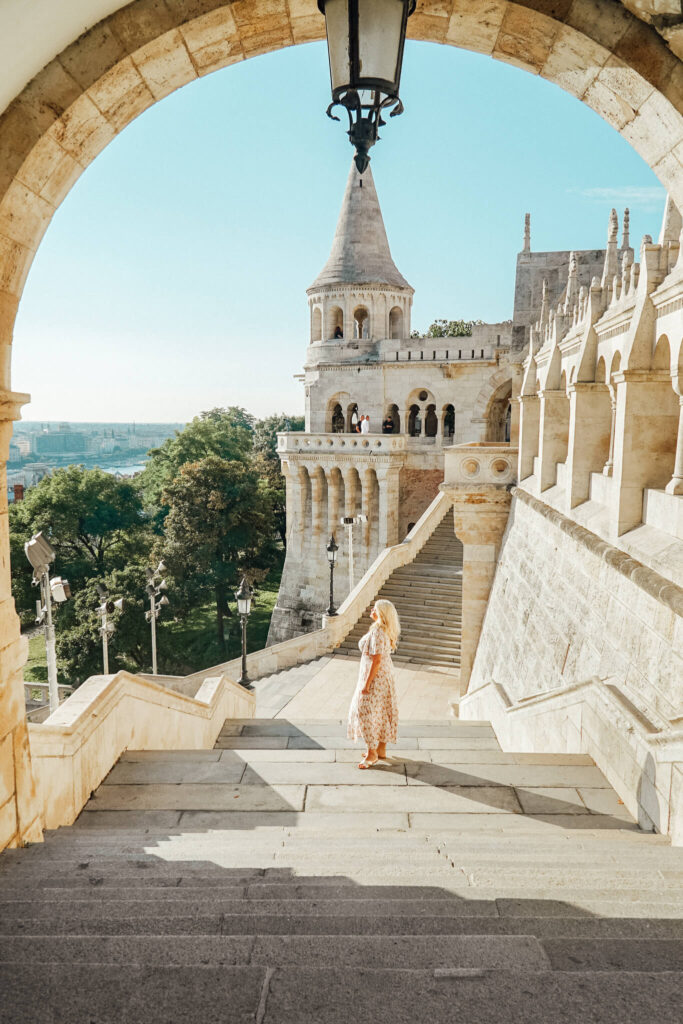
Fisherman’s Bastion offers panoramic views of the Danube River, Pest side of the city, and the Hungarian Parliament Building across the river. Many visitors enjoy the panoramic views during the day and return for the stunning cityscape illuminated at night. While I didn’t get a chance to return at night, I can only imagine the views are magical, especially with the Hungarian Parliament Building all lit up!
I truly was awestruck by the panoramic skyline views of the city and it was a great way to start off an epic Budapest itinerary!
While the upper terraces offer panoramic views and charge an entry fee, the lower levels of Fisherman’s Bastion, including some viewpoints and pathways, can be accessed for free. The area is easily accessible by foot, funicular, or public transportation, and it’s a part of the UNESCO World Heritage Site that includes the Buda Castle District.
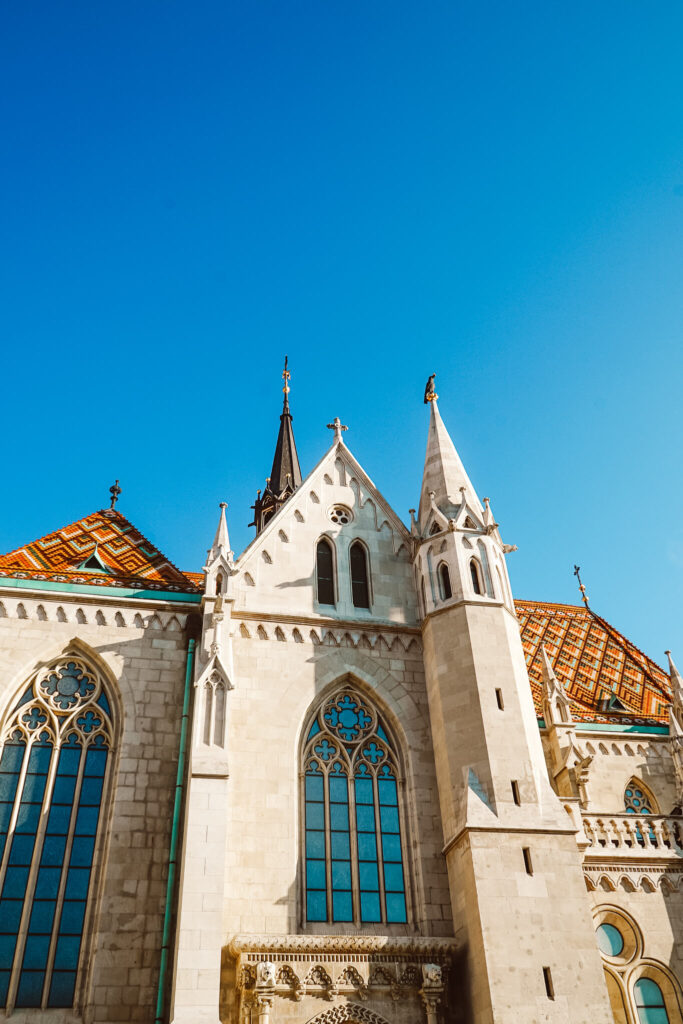
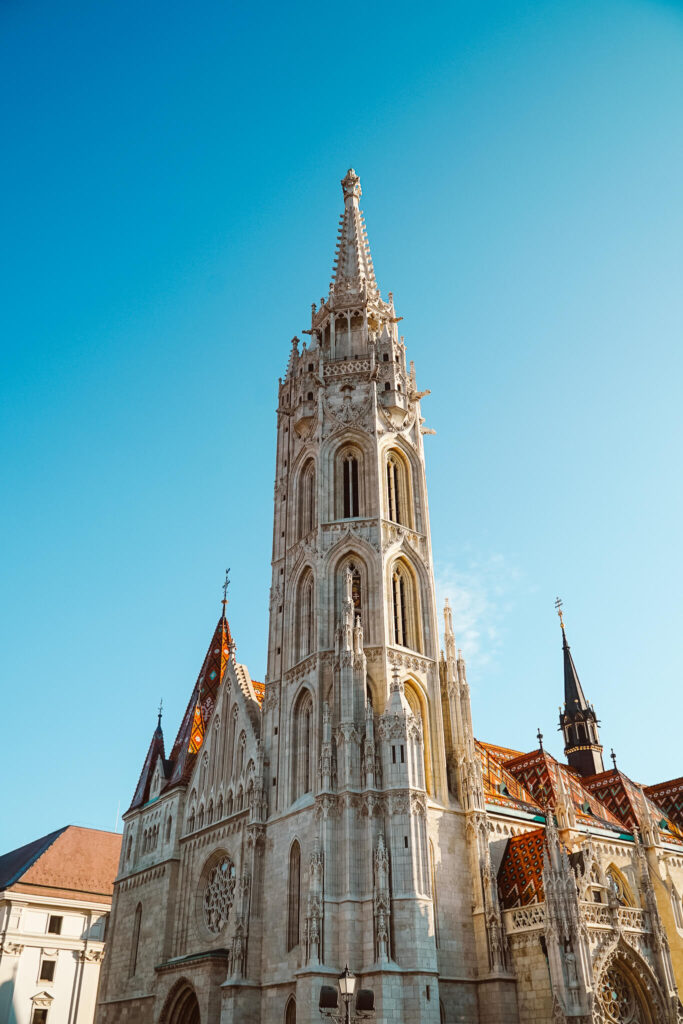
Matthias Church
You pretty much can’t visit Fisherman’s Bastion without seeing Matthias Church as they are right next to each other!
Matthias Church, also known as the Church of Our Lady of Buda, is one of Budapest’s most prominent and historically significant churches. It has a rich history dating back to the 13th century when the original church was constructed. Over the centuries, it has undergone several reconstructions and renovations, each adding unique architectural elements.
Named after King Matthias: The church was named after King Matthias Corvinus, a renowned Hungarian ruler who ordered the construction of a magnificent southern tower in the late 15th century. The tower, named the Matthias Tower, is a notable part of the church’s architecture.
Visitors can explore the interior of the church, attend religious services, and climb the bell tower for panoramic views of the Buda Castle District and the city beyond. There might be an admission fee to enter the church, depending on whether there are ongoing exhibitions or events.
While I didn’t get a chance to go inside the church, I enjoyed admiring it from the outside before I was on my way back to the Pest side of the river!
Itinerary Note: If you’re keen to visit Buda Castle, this would be the best time to include it in this Budapest itinerary as you’ll already be in the Buda Castle District after visiting Fisherman’s Bastion and Matthias Church. It wasn’t high on my priority list as it looked to have similar views as Fisherman’s Bastion but it does look beautiful and I’d like to visit on my next trip to Budapest!
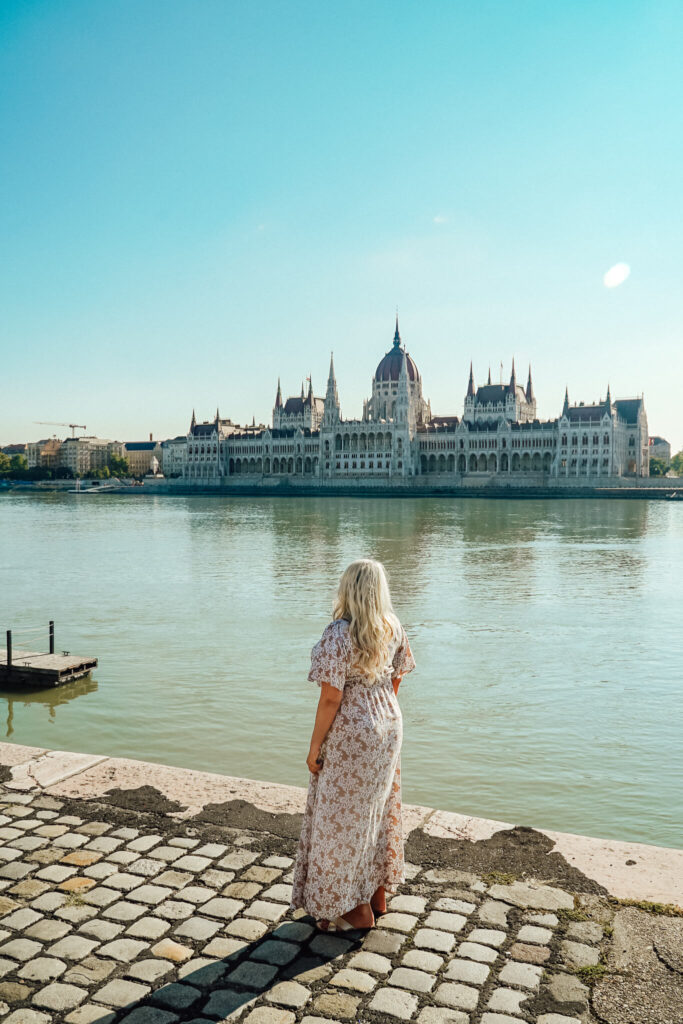
Take in the Views of the Hungarian Parliament Building
It’s a pretty quick and scenic stroll from Castle Hill down to the Danube River, where you can take in the views of the Hungarian Parliament Building!
Situated on the banks of the Danube River in Pest, the Parliament Building is in a prime location — the building itself offers stunning views of the river and the Buda side of the city. But, in my opinion, the best view of the building is from across the river on the Buda side!
The Parliament Building is a masterpiece of Gothic Revival architecture was completed in 1904. It features a grand, symmetrical façade with a central dome and two identical wings, highlighting its impressive scale and intricate details.
The exterior is adorned with intricate stone carvings, sculptures, and neo-Gothic details. The interior is equally impressive, with lavish decorations, stained glass windows, marble columns, and a rich display of Hungarian historical artifacts and artwork. You can admire its stunning architecture from the outside or take a guided tour inside if you like!
The Hungarian Crown Jewels, including the Holy Crown of Hungary, are housed within the Parliament Building. Visitors can view these treasures in the Dome Hall as part of guided tours.
The Parliament Building is especially enchanting at night when its illuminated, creating a captivating spectacle along the Danube River. This lighting adds to its allure and makes for some stunning photo opportunities!
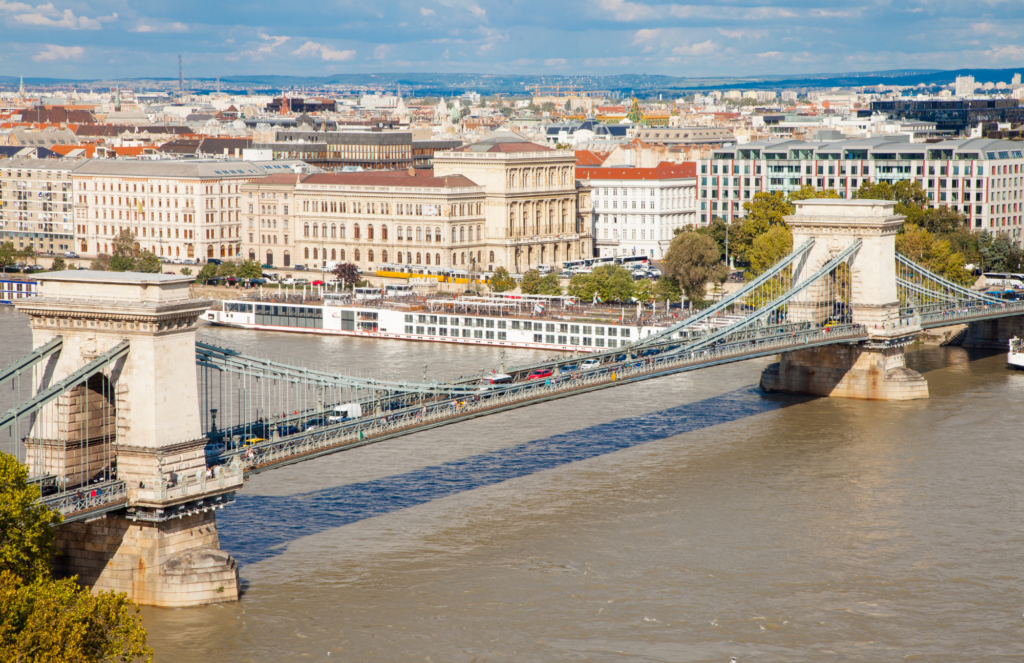
Cross the Széchenyi Chain Bridge
After taking in the views of the Hungarian Parliament Building, you can continue your stroll along the Danube River and cross the Széchenyi Chain Bridge to visit the Pest side of the city!
The Széchenyi Chain Bridge, commonly known as the “Chain Bridge,” is one of Budapest’s most iconic landmarks and the first permanent bridge to connect Buda and Pest.
Built between 1839 and 1849, the Chain Bridge holds great historical significance as it played a pivotal role in connecting Buda and Pest… ultimately leading to the unification of the two cities and contributing to Budapest’s development as Hungary’s capital!
The bridge is not only a vital transportation link but also a symbol of Budapest’s unity and cultural heritage. It offers breathtaking views of the Danube River, the Buda Castle District, the Hungarian Parliament Building, and other landmarks.
The Chain Bridge still serves as a functional roadway for vehicular traffic, pedestrians, and cyclists, connecting important parts of both Buda and Pest. But it’s also a popular spot for tourists to stroll and take photos, especially due to its panoramic views!
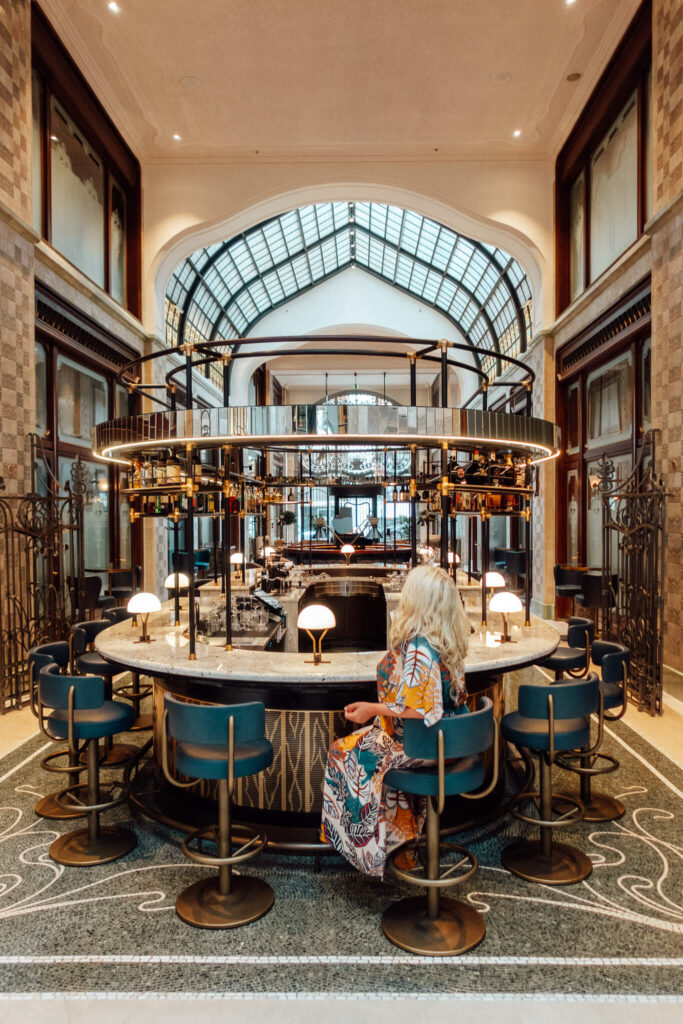
The Gresham Palace
At the other side of the Chain Bridge is the majestic Gresham Palace. Located on the Pest side of Budapest, the palace is a magnificent example of Art Nouveau architecture and luxury.
Built in the early 20th century, the Gresham Palace is renowned for its stunning architecture, featuring intricate ironwork, decorative elements, and a façade adorned with sculptures, mosaics, and motifs inspired by Hungarian folk art.
Following decades of varied use and neglect during different historical periods, the Gresham Palace underwent a major renovation in the early 2000s. The restoration project aimed to restore the palace to its former glory while transforming it into a luxury hotel.
After its renovation, the Gresham Palace reopened in 2004 as the Four Seasons Hotel Gresham Palace. The hotel offers opulent accommodations, fine dining restaurants, a spa, and unparalleled service, attracting luxury travelers from around the world.
Even for those not staying at the hotel, the Gresham Palace’s lobby and public spaces are accessible for visitors to admire its Art Nouveau architecture, decorative details, and grandeur.
As you’re continuing on your walk from Buda to Pest, make sure to stop and admire the grand Gresham Palace or even pop in to see the lobby or visit the restaurant for a drink or some lunch!
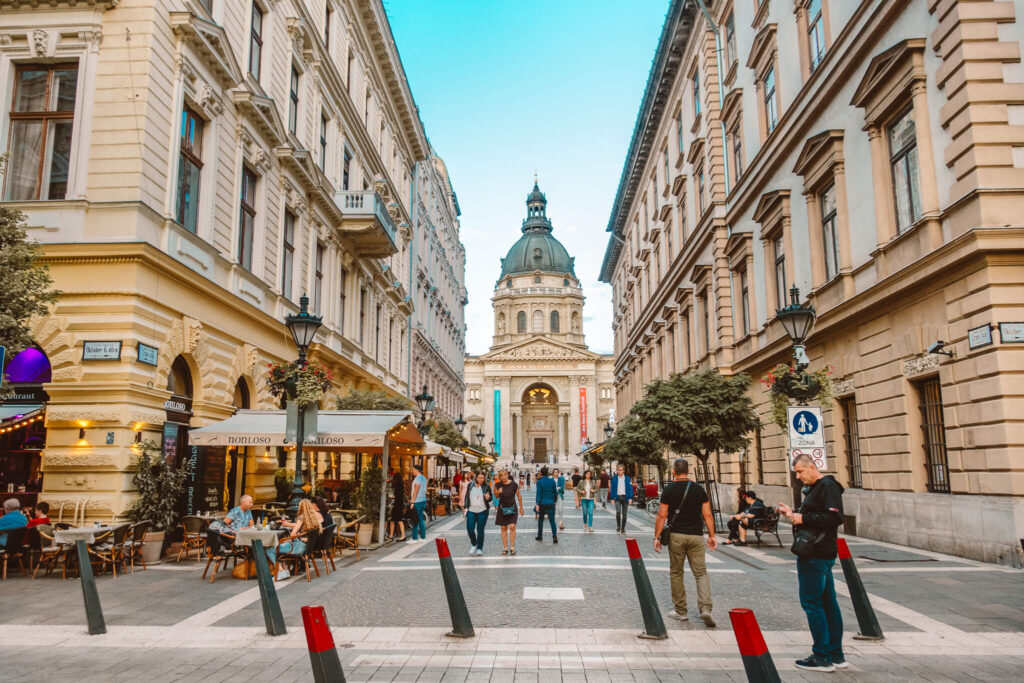
St Stephen’s Basilica
Less than 10 minutes’ walk from the Gresham Palace is St. Stephen’s Basilica, one of Budapest’s most significant religious and architectural landmarks.
The basilica is named after Stephen I of Hungary, the country’s first king and a key figure in Hungarian history. It serves as a memorial to King Stephen, who was instrumental in establishing Christianity in Hungary.
The construction of St. Stephen’s Basilica began in 1851 and its design is characterized by its impressive dome, which reaches a height of about 315 feet — making it one of the tallest structures in Budapest!
The interior is adorned with ornate decorations, beautiful frescoes, marble columns, and intricate details.
Visitors can admire the basilica’s stunning interior, including its high altar, magnificent organ, and impressive sculptures. The dome’s observation deck provides breathtaking views of the city and the Danube River.
While I didn’t get a chance to see the interior, I enjoyed seeing the impressive St Stephen’s Basilica from the outside and loved the surrounding area with lots of shops and restaurants.
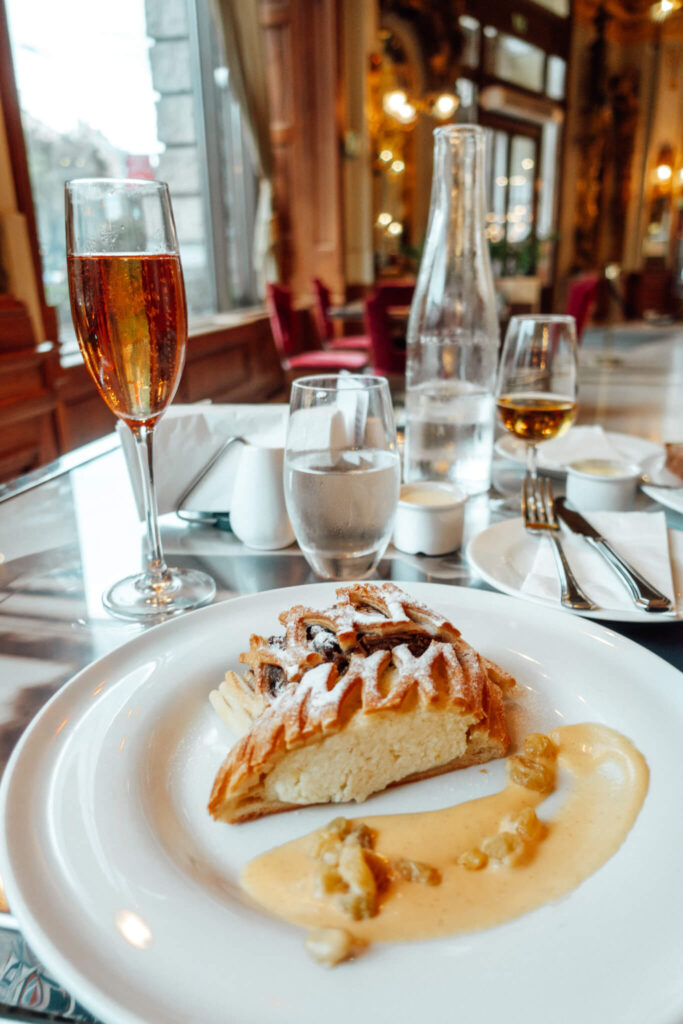
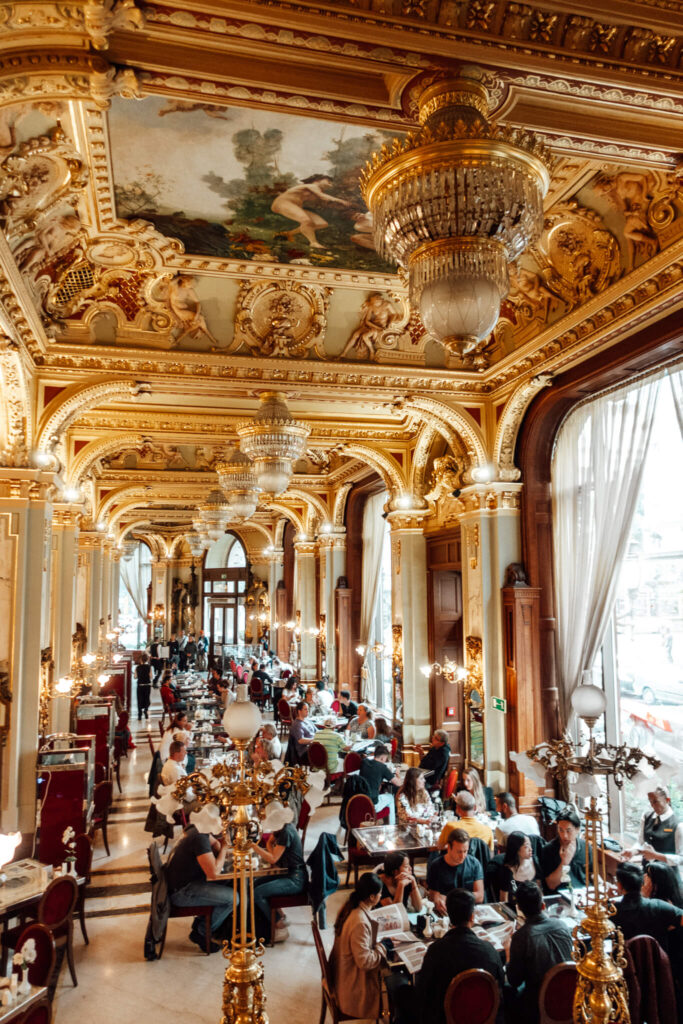
New York Café
The New York Café, often referred to as the “Most Beautiful Café in the World,” is a historic and opulent café with a rich history dating back to the late 19th century.
The café’s interior is an exquisite example of Belle Époque architecture and lavish Art Nouveau design. It features ornate decorations, gilded stucco details, frescoes, marble columns, and luxurious furnishings, creating a palatial and extravagant atmosphere. Sounds dreamy, right!?
Throughout its history, the New York Café has been a vibrant cultural hub frequented by artists, writers, intellectuals, and socialites. It was a gathering place for Budapest’s creative community and a venue for literary discussions, artistic events, and elegant social gatherings.
Today, visitors can indulge in a selection of gourmet pastries, cakes, coffee, and a variety of dishes served in an elegant setting reminiscent of the café’s grandeur during the Belle Époque era.
So have a glass of champagne, a delectable dessert, listen to the live music and soak in the opulence!
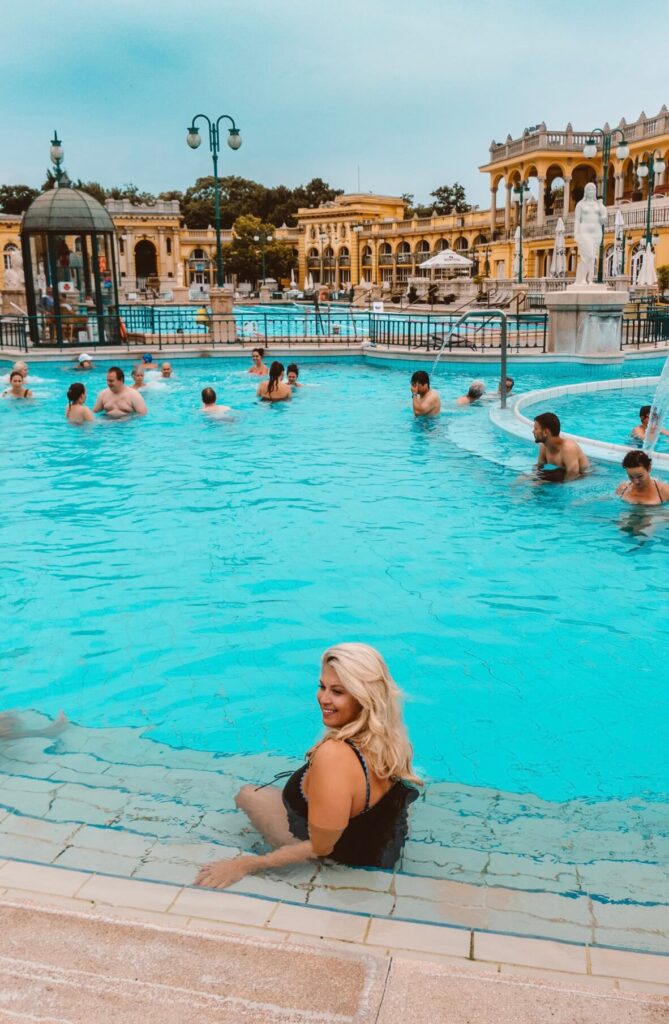
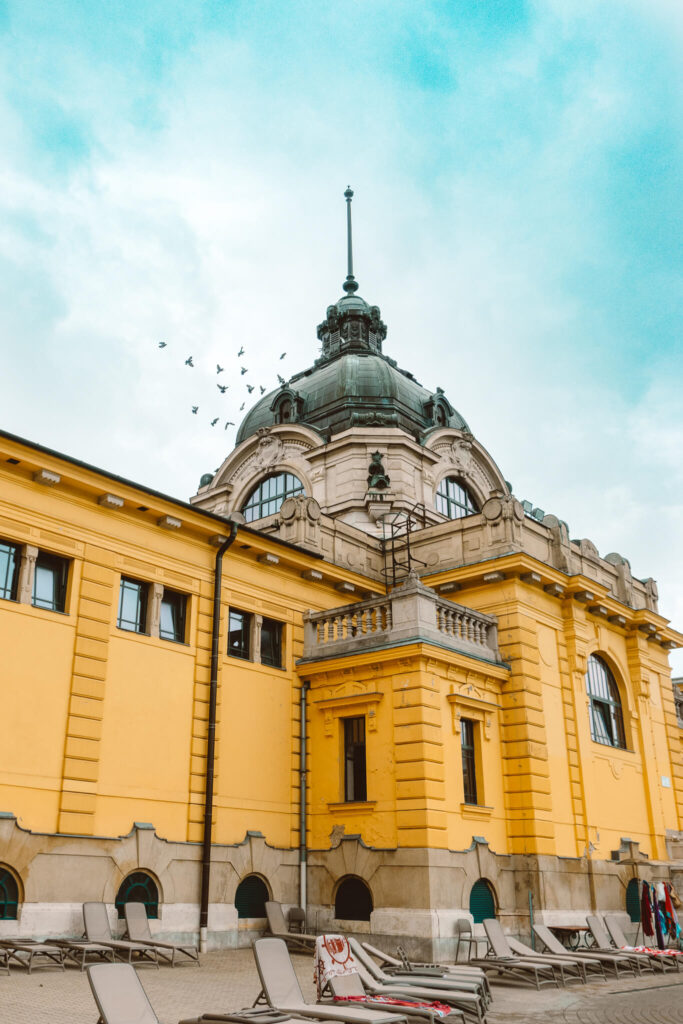
Szechenyi Thermal Baths
No visit to Budapest is complete without a visit to one of the famous thermal baths!
The city is home to underground thermal springs that release warm, mineral-rich waters that have relaxing and healing powers. The water’s mineral content, which includes calcium, magnesium, and other elements, is believed to have many health benefits!
The most famous of the city’s thermal baths is the Széchenyi Thermal Baths. Located in Budapest’s City Park, these baths are among the largest and most famous thermal baths in all of Europe.
The Széchenyi Baths were opened in 1913 and are housed in a stunning Neo-Baroque building with a yellow facade.
The baths feature both indoor and outdoor pools, allowing visitors to enjoy the thermal waters regardless of the weather. The outdoor pools are particularly popular, especially during colder months, offering a unique experience of bathing in warm waters amidst a snowy winter setting.
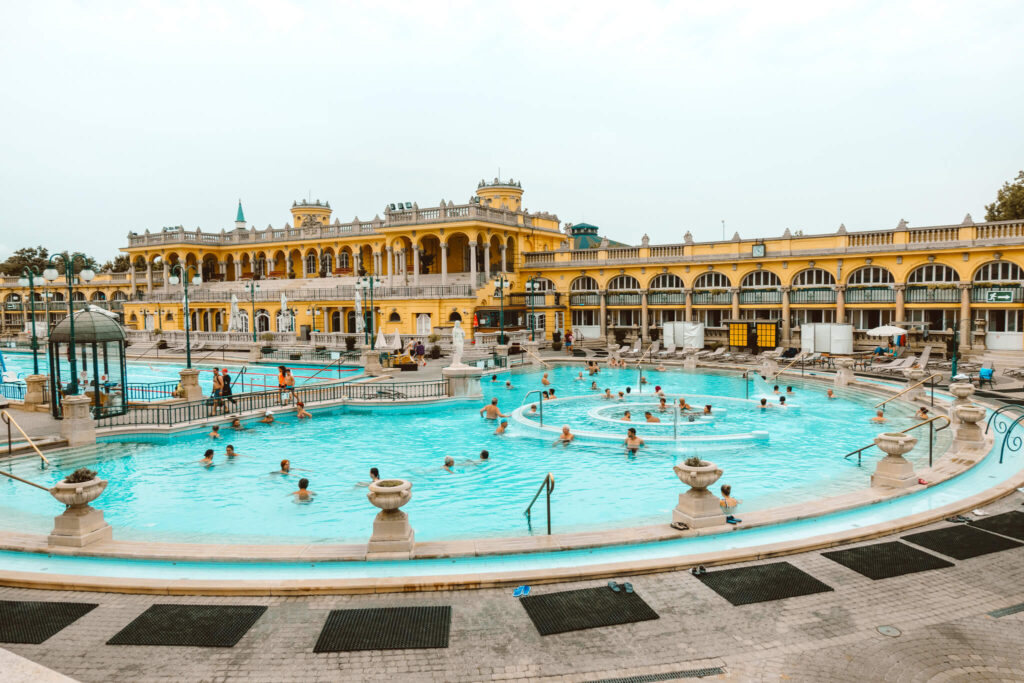
The baths offer a range of facilities, including various temperature pools, saunas, steam rooms, massage therapies, and other spa treatments.
And, they occasionally host special events, such as nighttime pool parties known as “Sparty” (spa party!), where visitors can enjoy music, drinks, and a unique atmosphere while bathing in the thermal pools.
The baths are easily accessible by public transportation and offer various ticket options, including entry-only tickets or packages that include access to different pools and spa services.
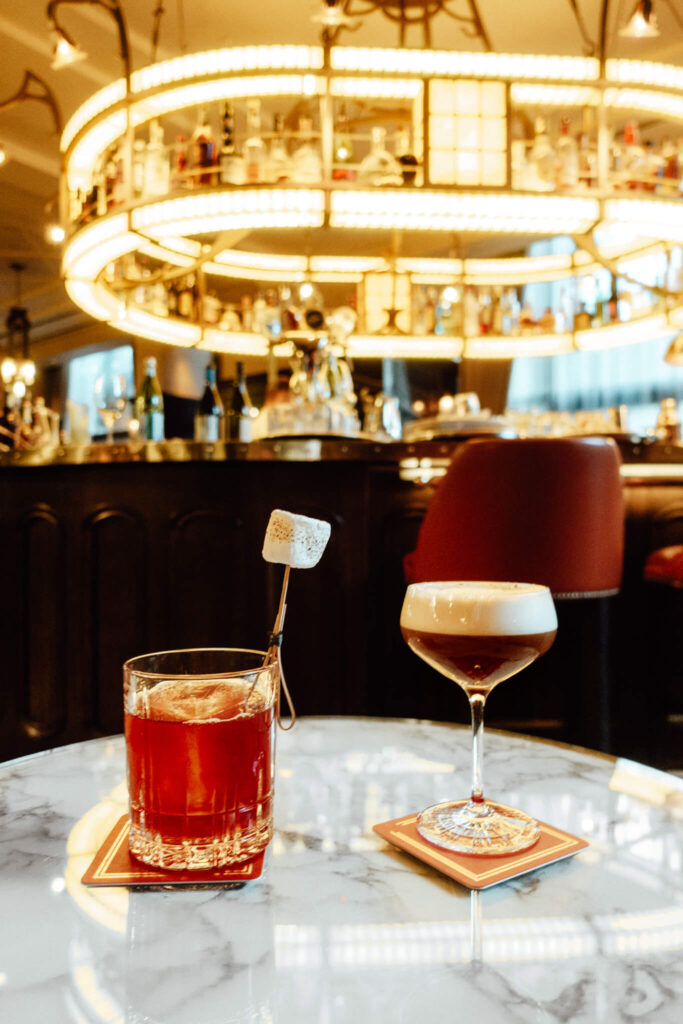
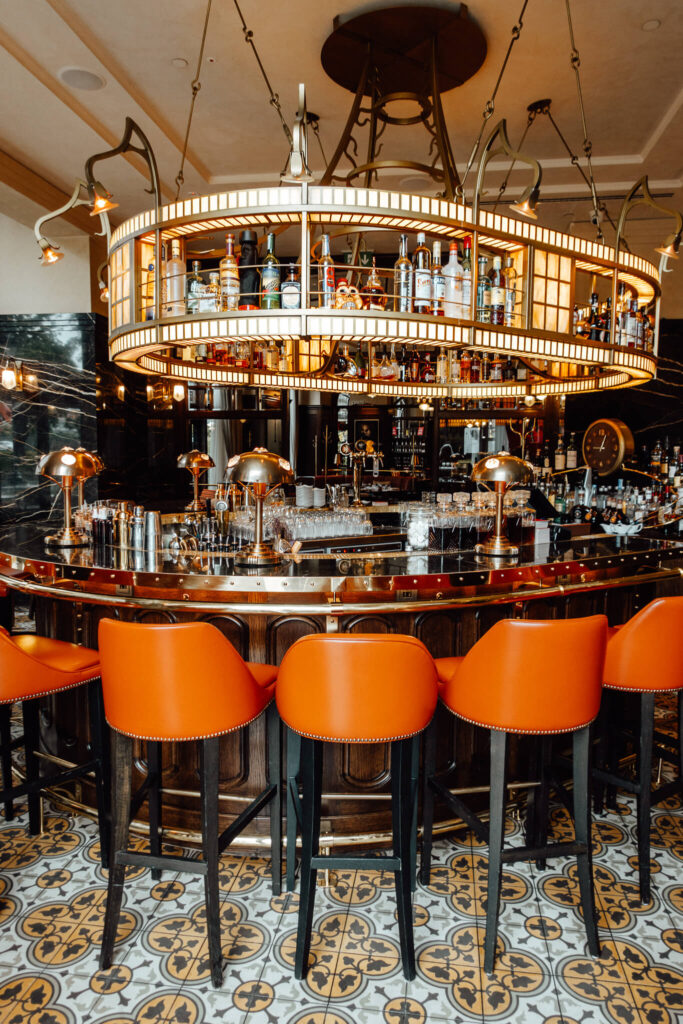

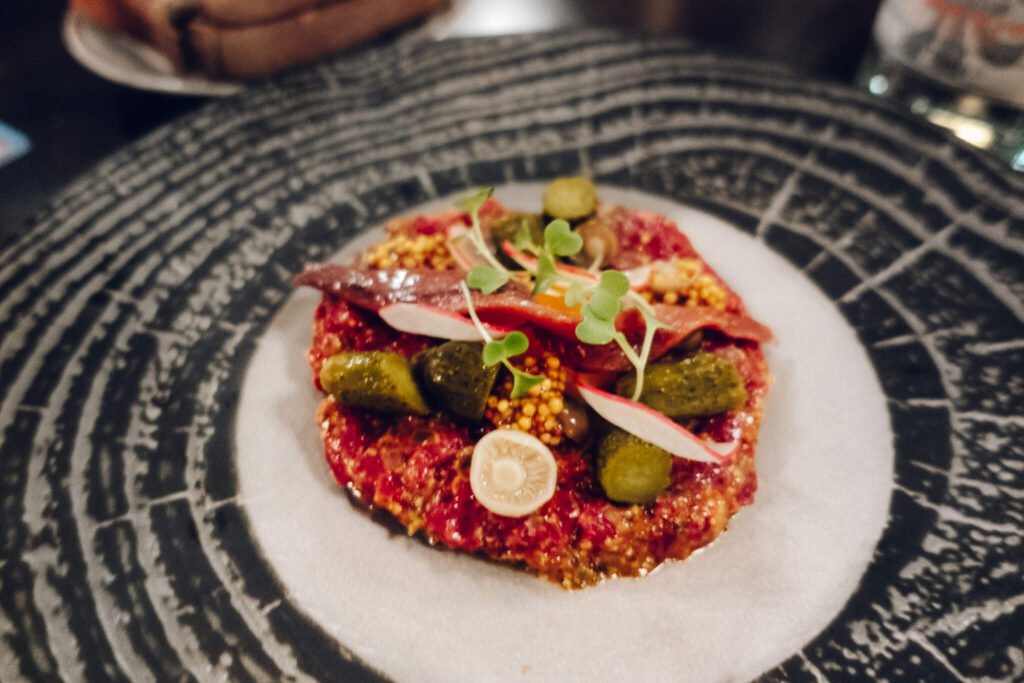
Enjoy Hungarian Cuisine
For your first dinner in Budapest, I’d recommend enjoying some traditional Hungarian food!
After your soak in the relaxing thermal baths, you could have dinner at Paprika Vendéglő, a small, rustic restaurant that came highly recommended. It’s just minutes from the Széchenyi Thermal Baths and serves Hungarian dishes — they are particularly known for their traditional goulash! And, be sure to make a reservation as they can get quite busy.
While we had wanted to try Paprika Vendéglő, we decided to head back to our hotel after the thermal bath to rest up, take a shower and change for the evening. We ended up dining at KOLLÁZS, located in the Four Seasons Gresham Palace, where we enjoyed traditional dishes like goulash soup and foie gras. It was the perfect way to end the first day of our Budapest itinerary!
Budapest Itinerary — Day 2
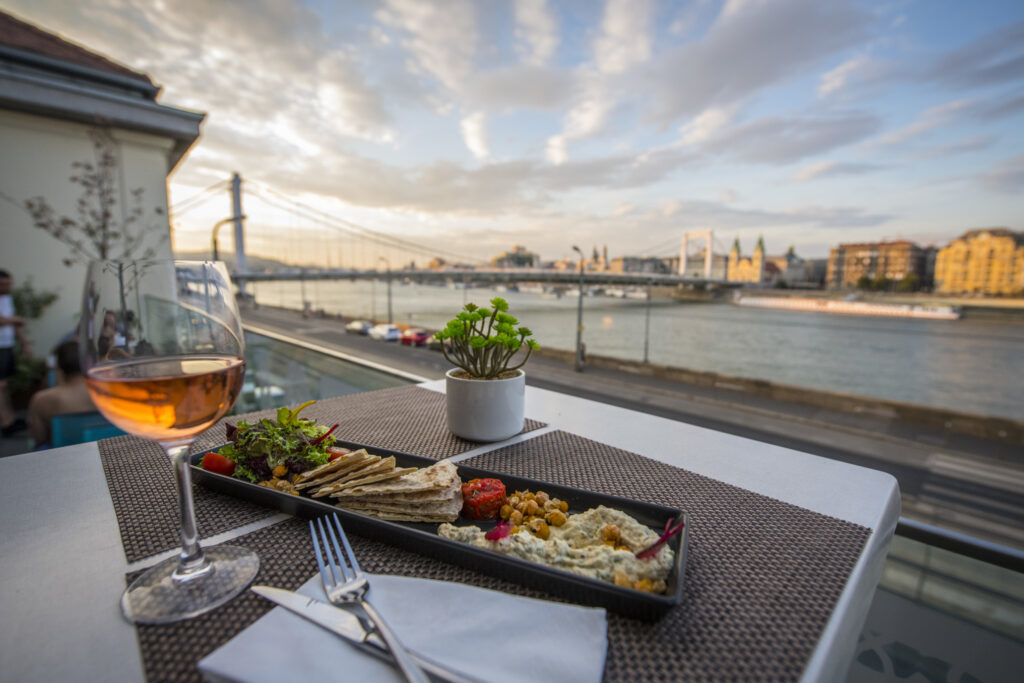

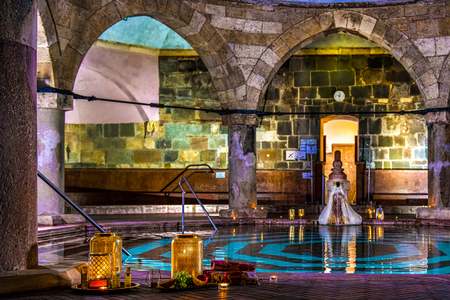
Rudas Baths
For the second day of this Budapest itinerary, we visited some more of the city’s famous thermal baths! This time at Rudas Baths, located on the Buda side of the Danube River.
Rudas Baths, another renowned thermal bath complex in Budapest, has a long history dating back to the 16th century during the Ottoman era. The architectural style of Rudas Baths combines elements of Turkish and Renaissance architecture. The bath complex features a traditional Turkish octagonal pool covered by a dome with colored glass windows allowing natural light to filter in.
But, my favorite part of Rudas Baths?! The stunning views of the Danube River and Budapest’s cityscape seen from the rooftop thermal pool. Relaxing in a rooftop thermal pool was definitely one of my favorite experiences in Budapest!
Apart from the thermal pools, Rudas Baths offer a range of wellness facilities such as saunas, steam rooms, cold plunge pools, and massage services. The bath complex also offers traditional Turkish-style treatments like hammam rituals and scrubbing massages.
Note: If you plan on visiting with a partner or friend of the opposite gender, make sure to check the bath schedule as they offer mixed days when both genders can access the pools together, along with gender-segregated days!
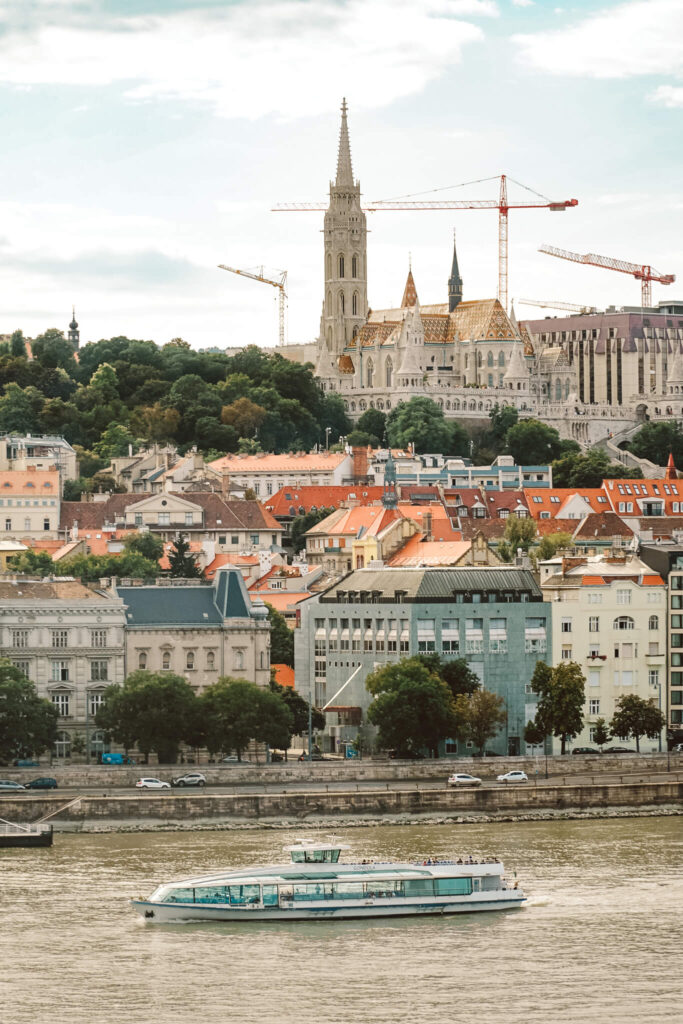
Stroll Along the Danube River
After a relaxing soak in the Rudas Baths, it’s time to head back to the Pest side of the city — which gives us a great opportunity for a walk along the famous Danube River!
The Danube River is one of Europe’s major rivers, flowing through multiple countries and holding significant historical, cultural, and economic importance. It originates in the Black Forest of Germany and flows southeastward through multiple countries: Germany, Austria, Slovakia, Hungary, Croatia, Serbia, Bulgaria, Romania, Moldova, and Ukraine before flowing into the Black Sea.
Several iconic cities are situated along the Danube, including Vienna, Budapest (of course!), Belgrade, and Bratislava. The river flows past stunning landscapes, historic castles, charming towns, and UNESCO World Heritage Sites.
The Danube attracts lots of tourists for river cruises and boat tours where visitors can enjoy scenic views and experience the vibrant culture of cities along its banks.
They even have Christmas market river cruises along the Danube…. Which would be my dream come true as a huge Christmas lover!!
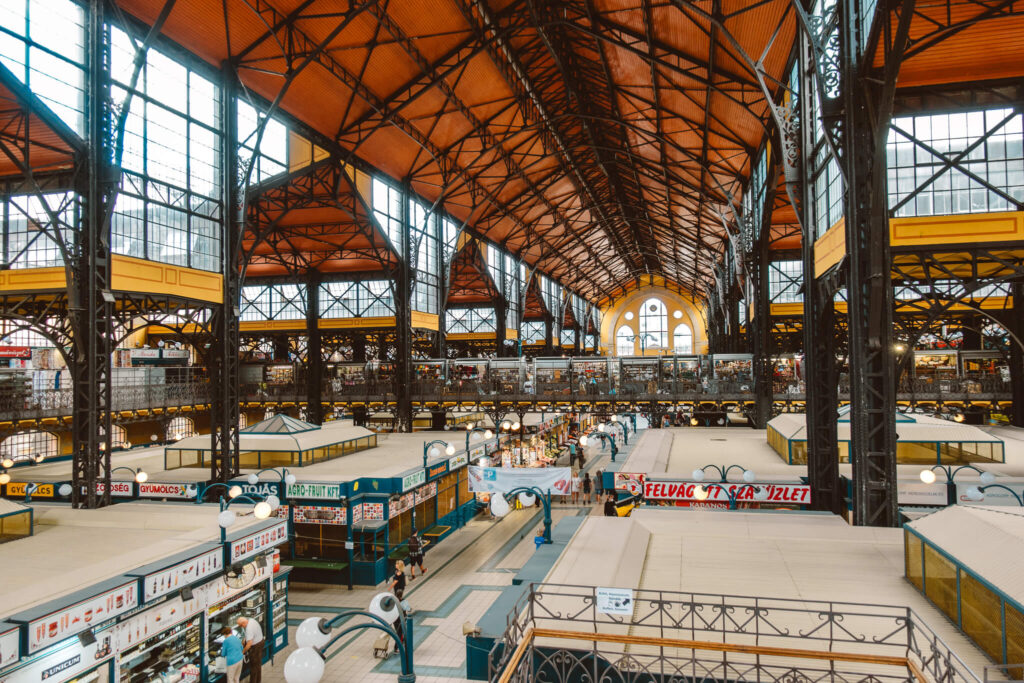
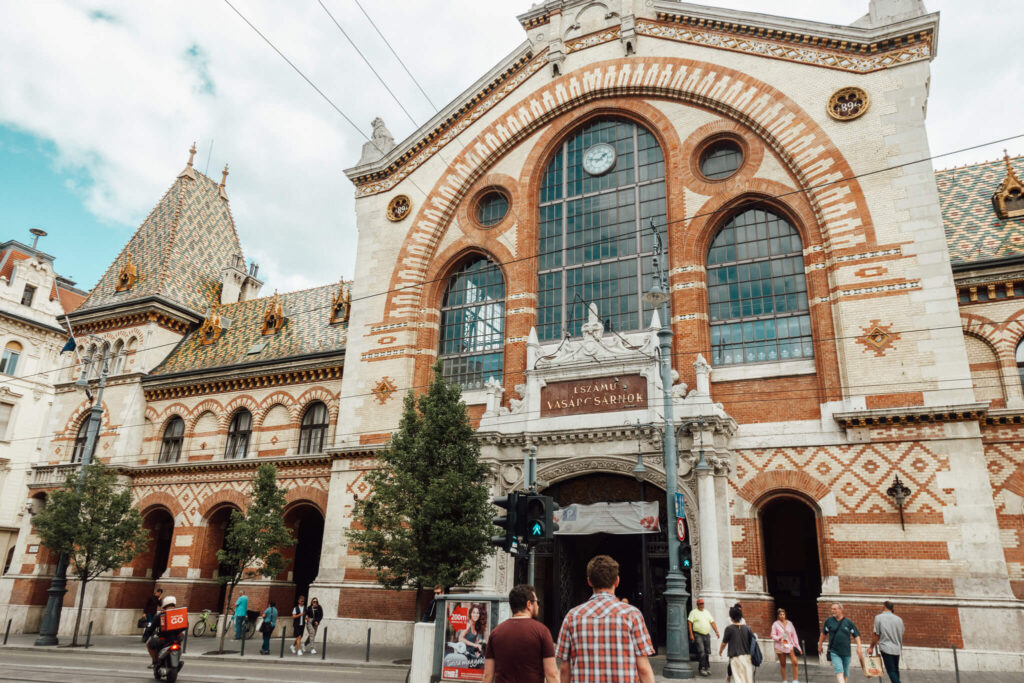

Central Market Hall
About a 15 minute walk from Rudas Baths is the Central Market Hall (also known as the Great Market Hall), a historic and bustling marketplace located in the heart of Budapest.
Situated near the banks of the Danube River in Pest, the Central Market Hall is a popular destination for both locals and tourists looking for traditional cuisine, local produce, and souvenirs.
The three-story building houses a wide array of stalls and vendors selling an assortment of goods. The ground floor primarily features fresh produce, fruits, vegetables, meats, cheeses, pastries, spices, and other local Hungarian delicacies.
Don’t miss trying the Hungarian meatballs with paprika sauce!
The upper floors of the Market Hall offer a selection of handicrafts, textiles, clothing, ceramics, embroidered items, and souvenirs, making it a great place to shop for authentic Hungarian gifts and keepsakes.
Note: the Central Market Hall is open throughout the week, except Sundays and certain public holidays. It’s best to visit earlier in the day to experience the market at its liveliest!
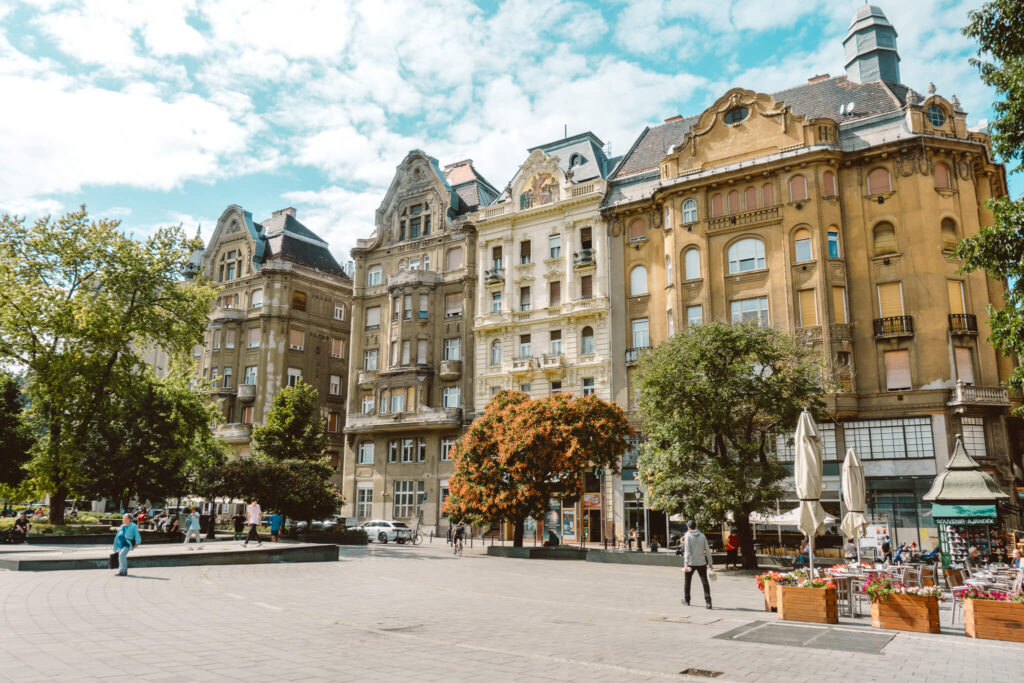
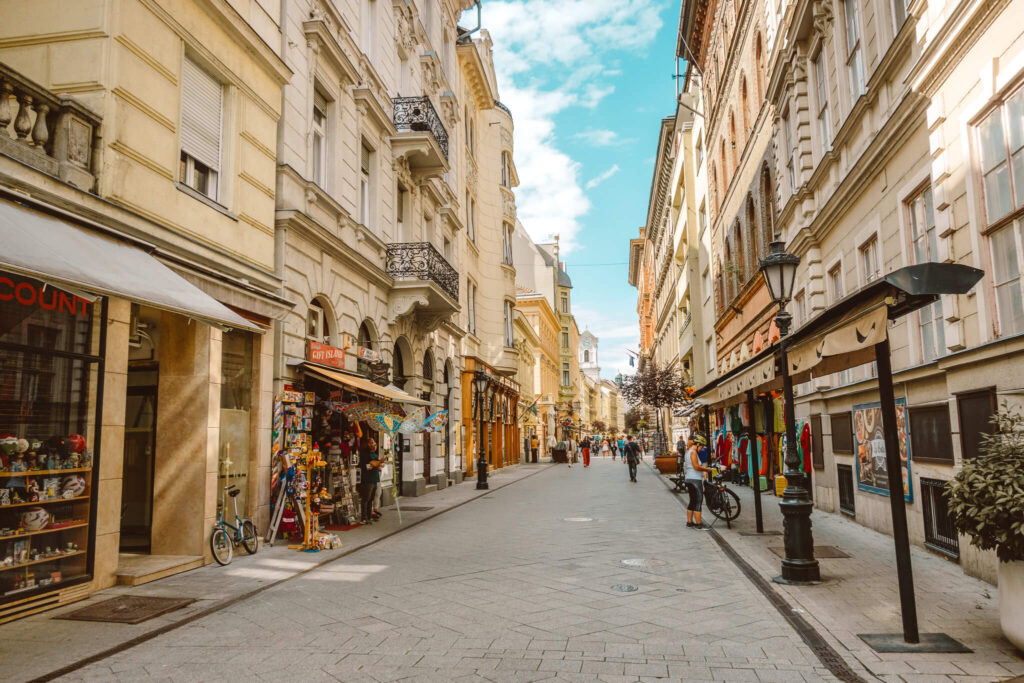
Váci Street
Across from the Central Market Hall is the famous Váci Street, one of Budapest’s most bustling shopping streets, known for its vibrant atmosphere, shopping options, and historical significance.
I definitely wanted to include some time for Váci Street on this Budapest itinerary as its a great way to soak up the city and get a taste of Budapest’s vibrant street life!
Due to its central location and popularity, Váci Street attracts a mix of locals and tourists. It’s easy to spend a few hours exploring shops, enjoying street performances, and discovering local cuisine at one of the many cafes.
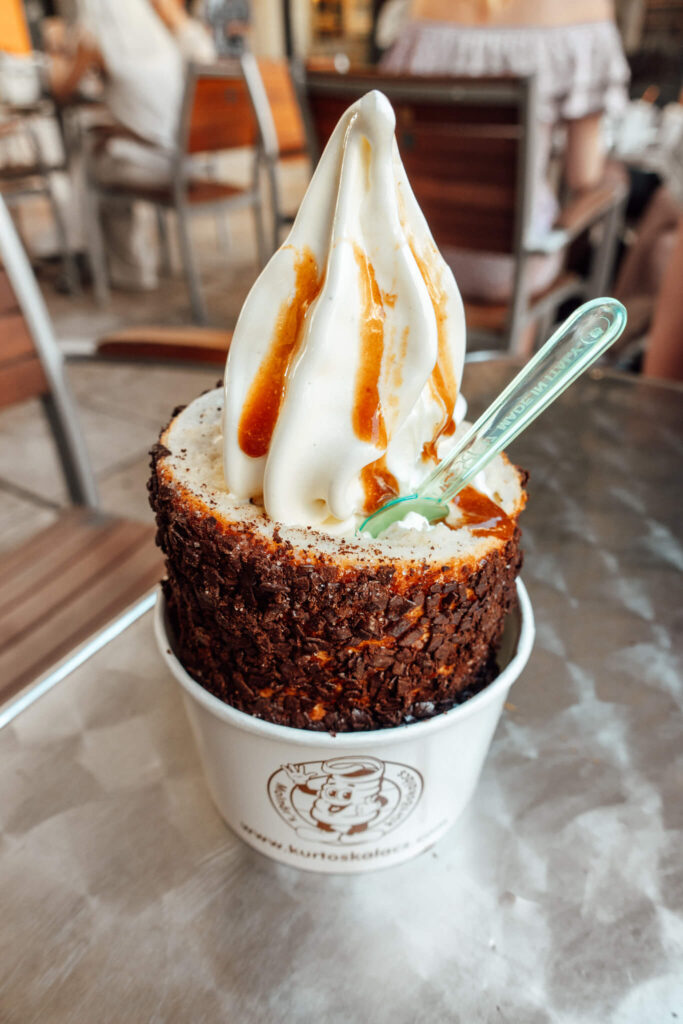
Enjoy a Chimney Cake
If you have a sweet tooth like me, you won’t want to miss sampling Hungary’s famous chimney cake dessert — called “Kürtőskalács” in Hungarian.
Stop at Molnár’s Kütrőskalács on Váci Street to experience this traditional Hungarian pastry that comes in a cylindrical shape (hence the name chimney cake!).
Kürtőskalács can be prepared in various ways and can include different toppings or coatings like cinnamon, cocoa, chopped nuts, shredded coconut, or even sprinkles. The traditional version is often dusted with granulated sugar. Mine was filled with ice cream and rolled in chocolate flakes… YUM!
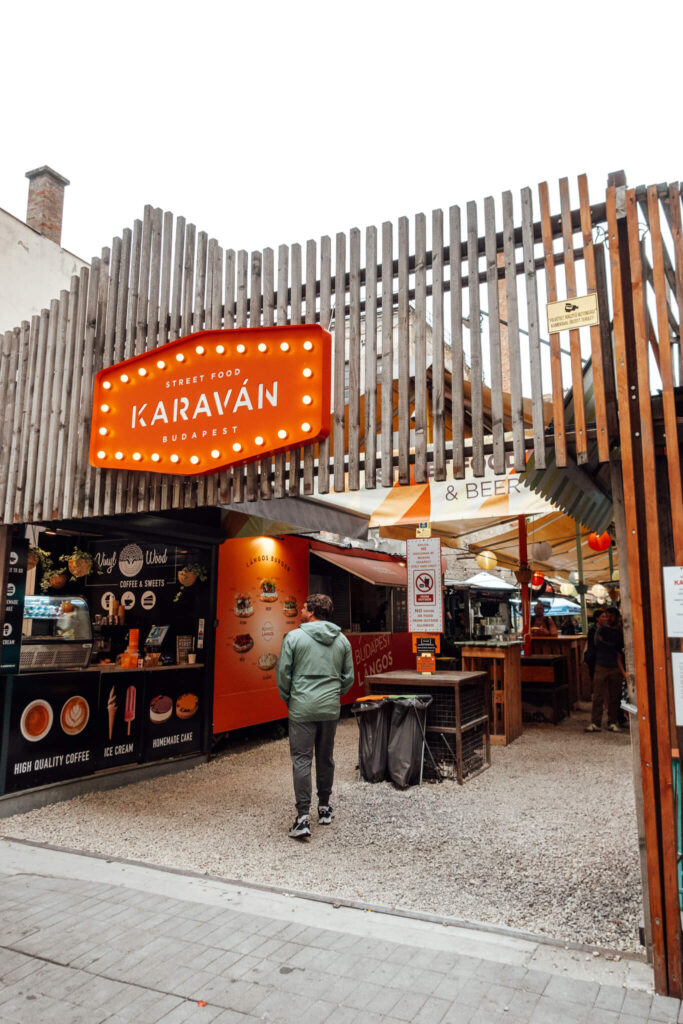
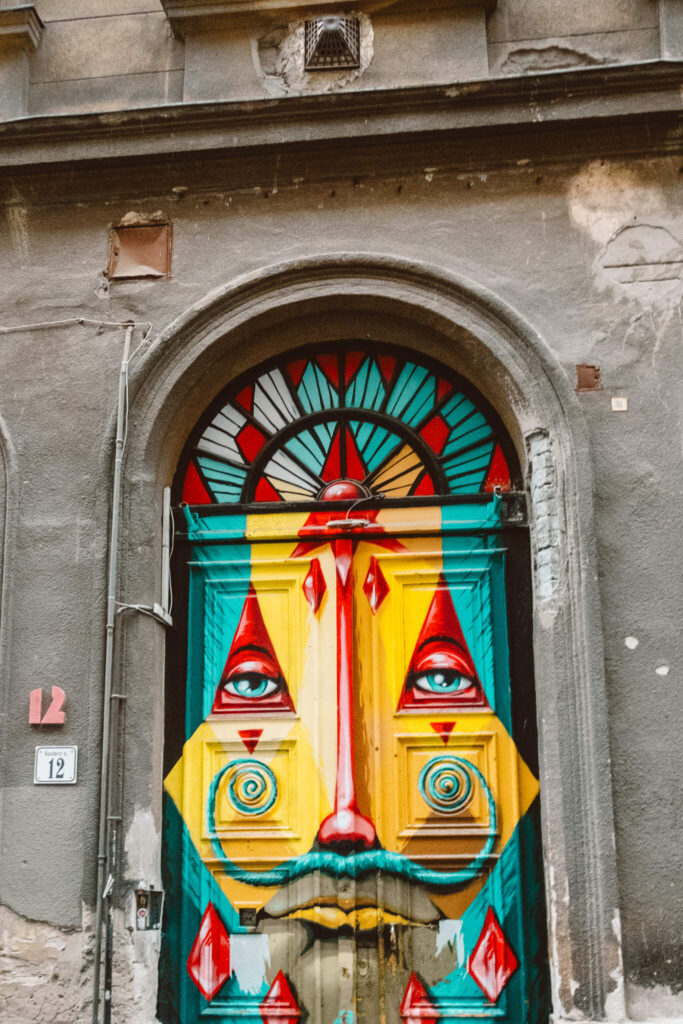
Explore the Jewish Quarter
The Jewish Quarter has a rich history dating back centuries. It was once a thriving center of Jewish life in Budapest, home to a large Jewish population and a vibrant community with its synagogues, schools, businesses, and cultural institutions.
The area still preserves traces of Jewish heritage and architecture, including the Dohány Street Synagogue — which is the largest synagogue in Europe!
Today, the Jewish Quarter has transformed into a vibrant and trendy district known for its eclectic atmosphere, street art, unique ruin pubs, alternative bars, galleries, and a lively nightlife scene.
I loved exploring this neighborhood of the city for its colorful street art and visiting Karavan, it’s trendy outdoor street food market.
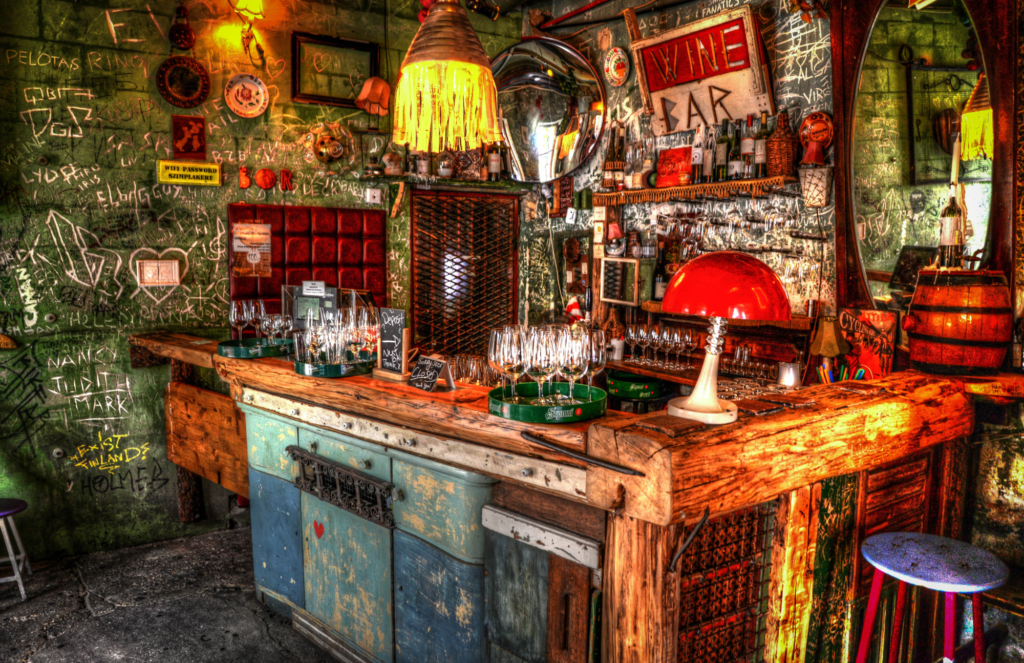
Visit a Ruin Bar
Budapest is well-known for its unique ruin pubs, which are abandoned buildings (or “ruins”) that have been converted into hip bars or pubs.
And, ruin pubs, such as the famous Szimpla Kert, are iconic to the Jewish Quarter area!

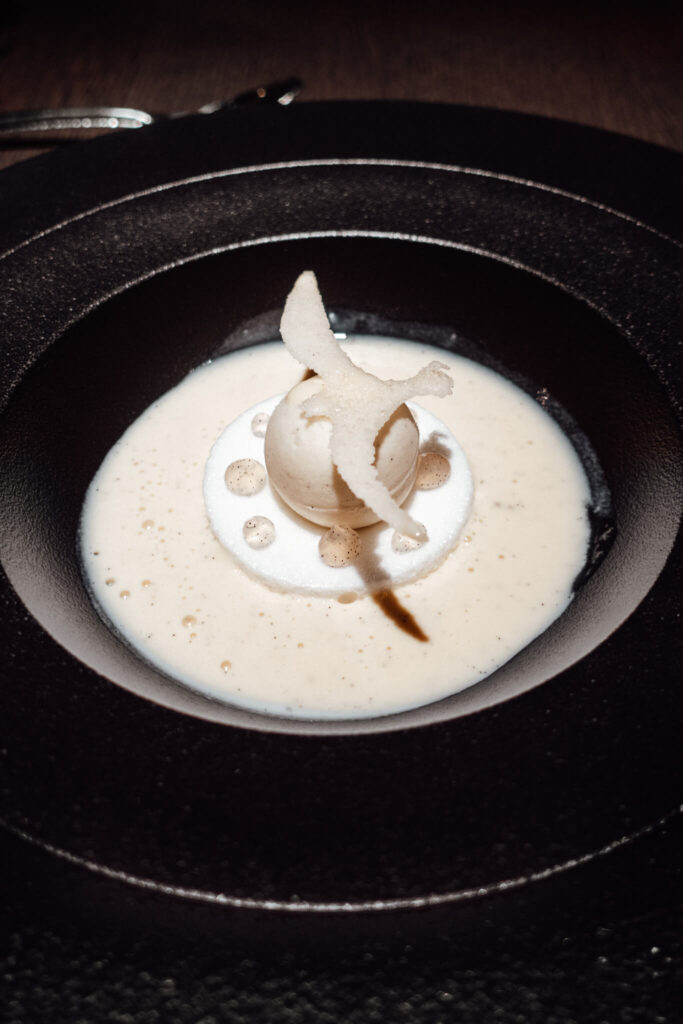
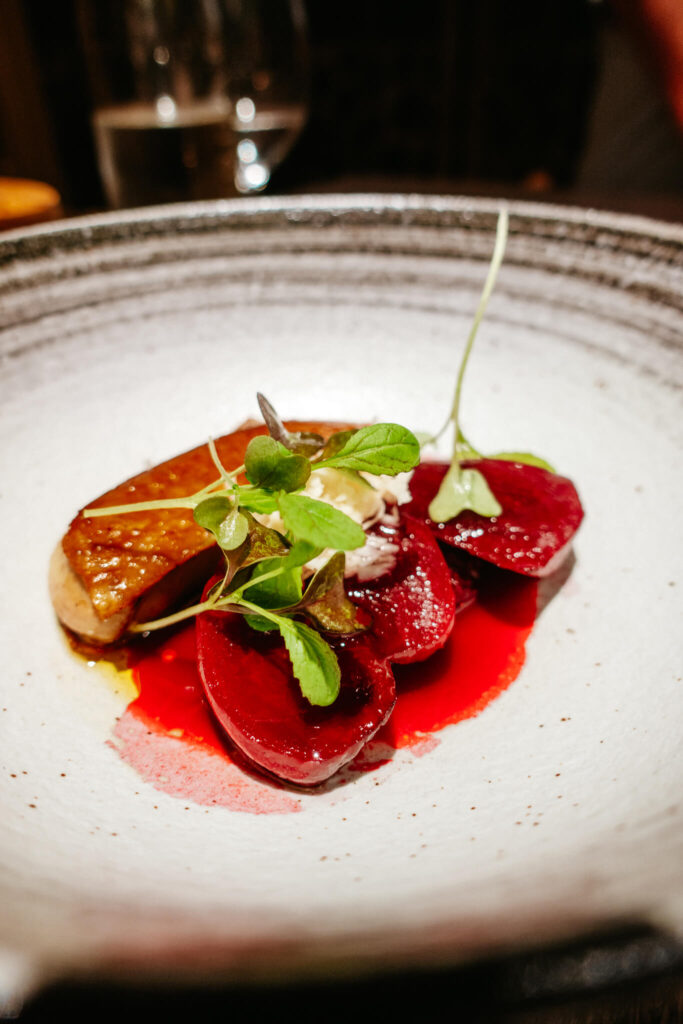
Dinner at Textura
To finish off our incredible Budapest itinerary, we ended our final day with an out-of-this-world dinner at Textura.
Textura is the sister restaurant to the city’s famous Borkonyha restaurant which boasts a Michelin star. While Borkonyha is traditional, Textura is more contemporary and playful.
This chic restaurant specializes in creative takes on Hungarian dishes and offers tasting menus to guide diners through a delightful culinary experience.
We enjoyed the 5-course tasting menu and each dish was beautifully presented and tasted incredible. Plus, the wine and service was top-notch as well!
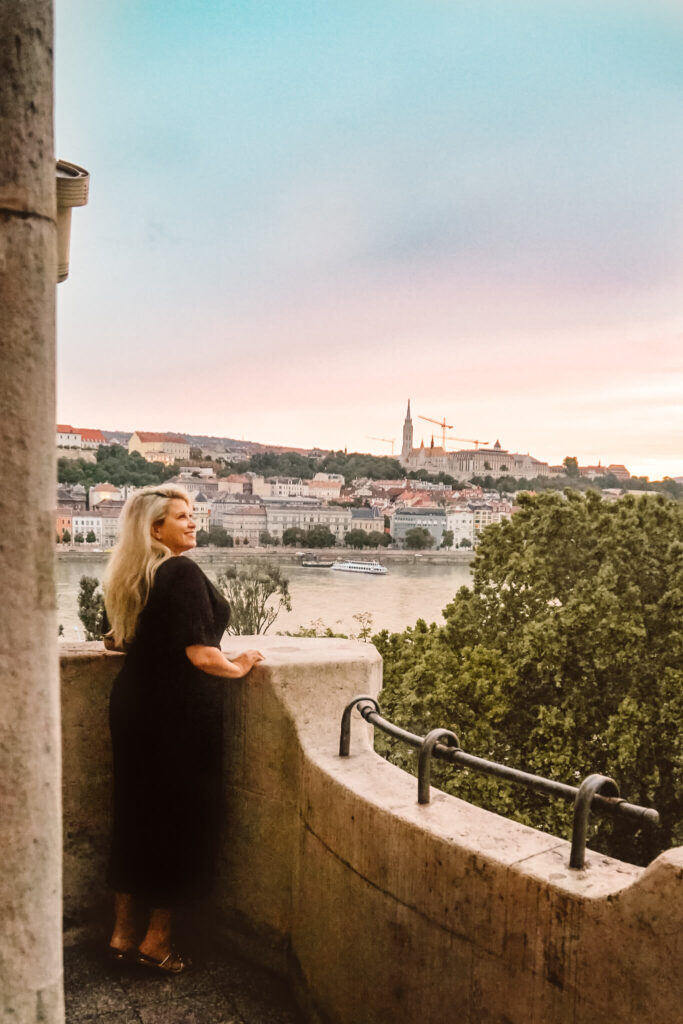
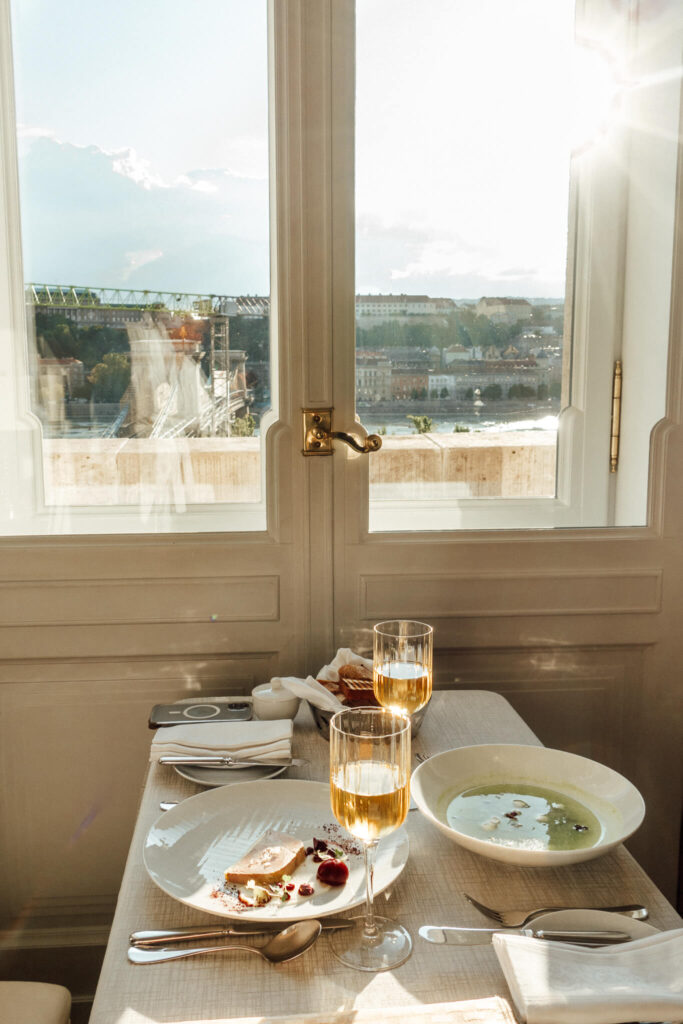
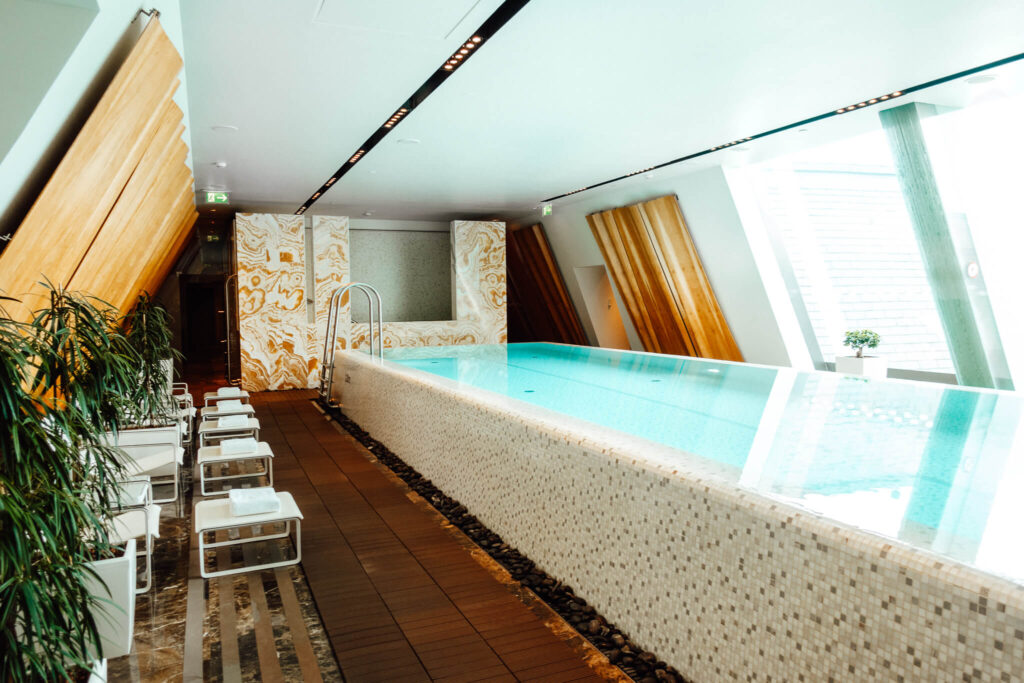
Where to Stay in Budapest
Looking for the best hotels in Budapest? From backpacker hostels to a five-star snooze, the city has tons of lodging options. Here are my top picks!
Luxury
- Four Seasons Gresham Palace: I can’t say enough good things about staying at this hotel! Our room had an incredibly comfortable bed, luxurious amenities, and gorgeous views of the Danube River, castle hill, and iconic chain bridge. Plus, we loved the entire property with its beautiful spa, delicious restaurant, and friendly service!
- Matild Palace: Another top luxury hotel in Budapest set in a majestic, grand building! The rooms are playful contemporary with all the luxe amenities you could need. Plus, the hotel’s restaurant is famed Spago by Wolfgang Puck for all the foodies out there!
- Anantara New York Palace: This beautiful hotel is home to the famed New York Cafe so if that’s on your bucket list then this may be the hotel for you! And, many of the rooms feature outdoor terraces which is oftentimes rare for urban accommodations.
- Kozmo Hotel Suites & Spa: A very stylish hotel located in a beautiful historic building with scenic city views. Guests love the excellent five-star service as well!
Mid-Range
- Hotel Clark: With a fabulous location in Buda, Hotel Clark has views of the famous chain bridge and is close to many of the city’s iconic landmarks. The hotel is modern with a trendy, hip atmosphere — the rooms follow suit and many have a river view!
- Hotel Collect: This gorgeous luxe boutique hotel has a dark and trendy yet fun aesthetic. Guests love the central location, comfortable rooms, delicious breakfast, and fabulous staff!
- Emerald Downtown Luxury Suites: A modern hotel right in the heart of Pest with top amenities and helpful staff.
- Áurea Ana Palace: This hotel features an elegant old-world aesthetic with high ceilings and regal decor. The rooms are spacious with modern amenities.
Budget
- Mamaison Residence Izabella: With an ideal walkable location, this hotel is located close to many of the city’s top sights. The rooms are large with deluxe suite options for families, and are equipped with amenities.
- Florin Apart Hotel: With unique apartment style lodging, this is a great budget option with a kitchen / kitchenette. Guests love the central location and the clean, comfortable accommodations!
- NH Collection Budapest City Center: This hotel features 4-star apartments which makes it an ideal option for families or those traveling in groups! Plus, it has a central location perfect for exploring the city.
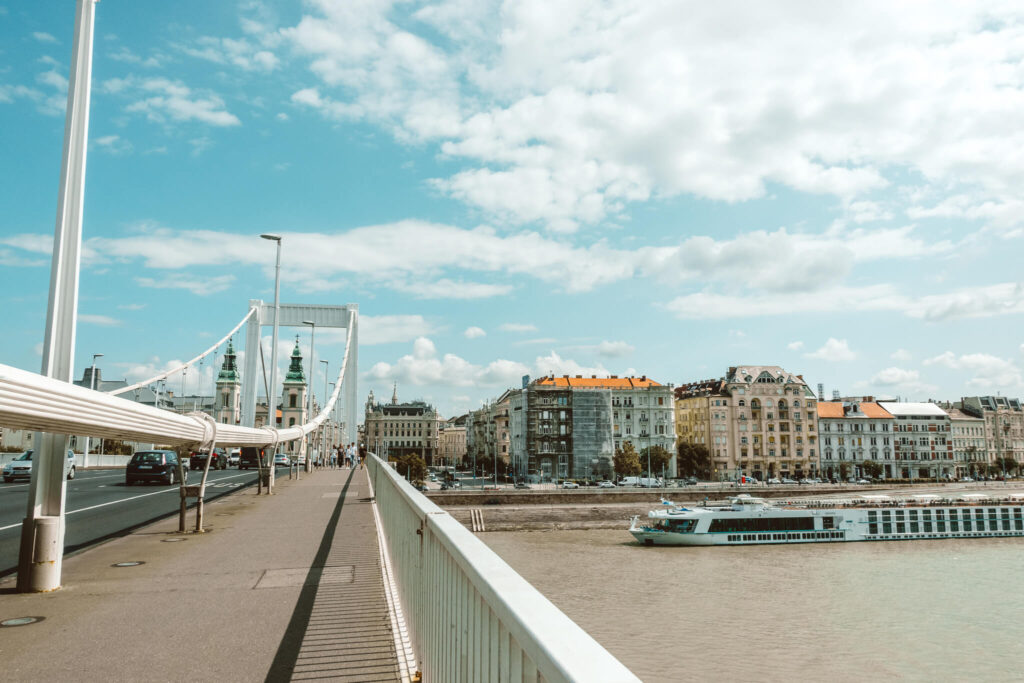
How to Get to Budapest
As the capital city of Hungary, Budapest is well-connected to many destinations throughout Europe — and the rest of the world! And there are lots of ways you can travel to the city… Here are the primary modes of travel to Budapest:
By Air: Budapest Ferenc Liszt International Airport (BUD) is the main international airport serving the city. It’s well-connected to many cities across Europe — like Paris, London, Stockholm, Lisbon, Rome, and countless others! — as well as to destinations worldwide like Dubai, Shanghai, Cairo, and others. Many airlines operate flights to Budapest regularly, making it very easily accessible by air.
By Train: Budapest is a major railway hub in Central Europe and it has several international train connections with neighboring countries and various European cities. Some of the popular cities connected by train to Budapest are Vienna, Salzburg, Prague, and Warsaw, among others. And, Keleti (Eastern), Nyugati (Western), and Déli (Southern) railway stations are the primary stations in Budapest, serving trains from different directions.
Since I was visiting Budapest as part of a larger European summer trip, I actually took the train into Budapest (from Venice, Italy) and flew out of the city (via a direct flight to Kefalonia, Greece!). Both modes of transportation were seamless for this Budapest itinerary, and the train station and airport were nice, modern, and easy to navigate!
By Bus: International and domestic bus services operate to and from Budapest. The city has several bus stations, including Népliget and Stadionok, serving various bus routes.
By Car: Budapest is accessible by road via major highways and motorways from neighboring countries like Austria, Slovakia, Serbia, and Romania. The road network is well-developed, making it convenient to travel to the city by car. Just note that once you’re in Budapest, parking is limited and you likely won’t need your car to get around the city!
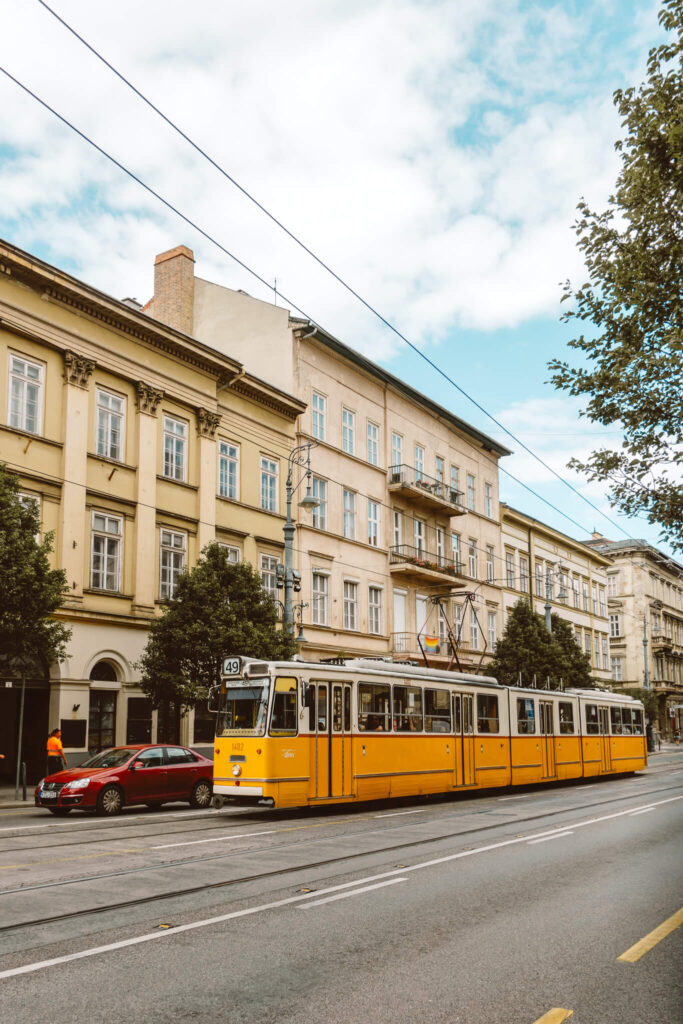
How to Get Around Budapest
Budapest has a well-developed public transportation system that offers various options for getting around the city conveniently. Here are the primary modes of transportation in Budapest:
Metro: Budapest has a metro system with four lines (M1, M2, M3, M4) covering most parts of the city. The metro is a quick and efficient way to travel between different districts!
Trams: The city has an extensive tram network that covers various areas, including both sides of the Danube River — yep, the tram goes over the bridge from Buda to Pest! Trams are a really convenient way of getting around central Budapest and offer great views of the city.
Bus or Trolleybus: Budapest has an large bus network that complements the metro and tram systems. Buses and trolleybuses cover areas not directly served by the metro or trams, providing additional connectivity.
When exploring Budapest, tourists can opt for a Budapest Card, which offers unlimited travel on public transportation (metro, buses, trams) within the city for a certain period and offers discounts on various attractions and services.
Funicular: The Budapest Castle Hill Funicular is a popular tourist attraction that connects the Buda Castle Hill to the Chain Bridge. Additionally, the cogwheel railway operates in the Buda hills, offering a scenic journey to areas like Széchenyi Hill and Hűvösvölgy.
Bicycles or Electric Scooters: Budapest has a growing network of bike lanes and rental services, making cycling a convenient and eco-friendly option to explore the city. There are also electric scooters available for rent through apps like Lime.
Taxi or Ridesharing: Taxis are readily available in Budapest, but ridesharing services like Uber and Lyft were banned in Hungary and aren’t available in the city. However, I’ve heard that the Bolt app is similar and commonly used in the city… although I didn’t get a chance to try it out!
While in Budapest, I found the trams to be a great way to get around if I got tired of walking… but honestly, much of the city is very walkable which is my favorite way to take in a new place!
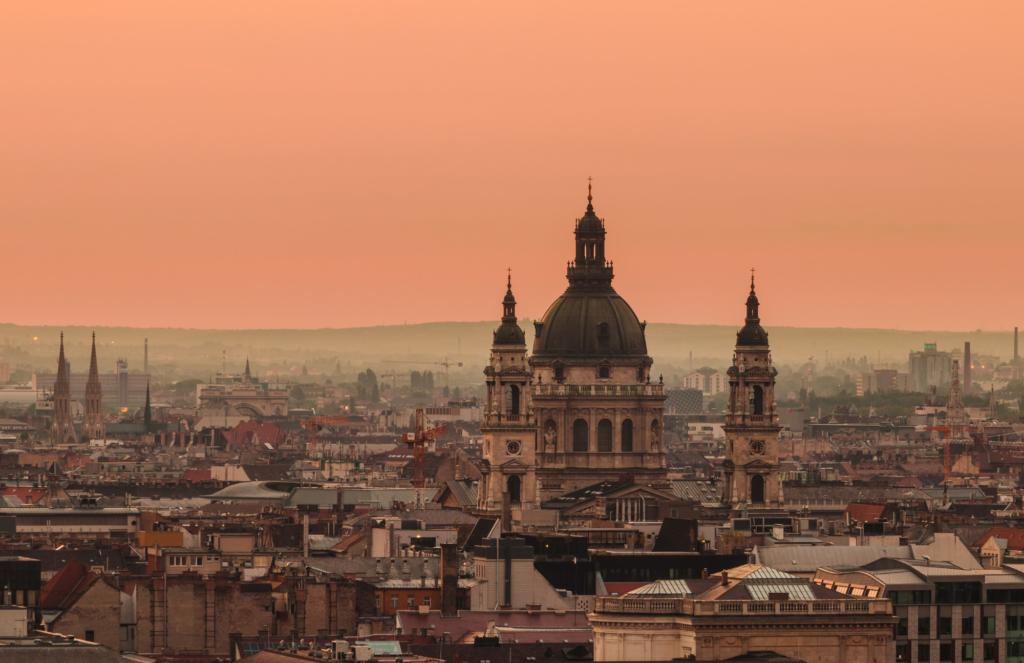
Best Time to Visit Budapest
The best time to visit Budapest largely depends on individual preferences and what you want to experience while in the city. Here’s a breakdown of Budapest’s seasons so you can decide when you’d like to visit!
Spring (March to May):
Spring in Budapest brings mild temperatures, blossoming flowers, and fewer tourists compared to the peak summer months. It’s a great time for sightseeing, enjoying outdoor activities, and experiencing cultural events like the Budapest Spring Festival.
Summer (June to August):
Summer is the peak tourist season in Budapest! The weather is warm to hot, making it ideal for exploring outdoor attractions, enjoying the nightlife, or attending a festival. However, expect larger crowds and higher prices during this time.
I visited during August and the weather was incredible with lovely warm days and mild evenings (I just needed a light sweater for dinner!). While the main tourist attractions were bustling with people, I didn’t find anywhere to be “too crowded” and would definitely recommend visiting in the summer if you prefer warm weather!
Fall (September to November):
Fall in Budapest brings mild temperatures and beautiful fall foliage, making it a picturesque time to visit. The weather is pleasant, and tourist crowds start to thin out compared to the summer months. It’s a good time for sightseeing, enjoying outdoor activities, and experiencing local culture.
Winter (December to February):
Winter in Budapest can be cold, with temperatures often dropping below freezing. However, the city takes on a magical atmosphere with its Christmas markets, festive decorations, and thermal baths providing a cozy retreat from the cold. It’s a great time to experience the city’s holiday spirit and enjoy various indoor attractions.
So when is the best season to visit? The shoulder seasons of spring and fall are generally considered favorable times to visit Budapest if you want to avoid crowds and higher hotel room rates. But if you want to visit the Christmas markets (which is absolutely on my bucket list!!) then you’ll want to visit during December.
Ultimately, the best time to visit Budapest depends on your personal preferences, desired activities, and tolerance for hot or cold weather conditions. Whether you prefer the buzz of summer festivals, the colors of fall, or the charm of winter markets, Budapest offers something unique throughout the year!
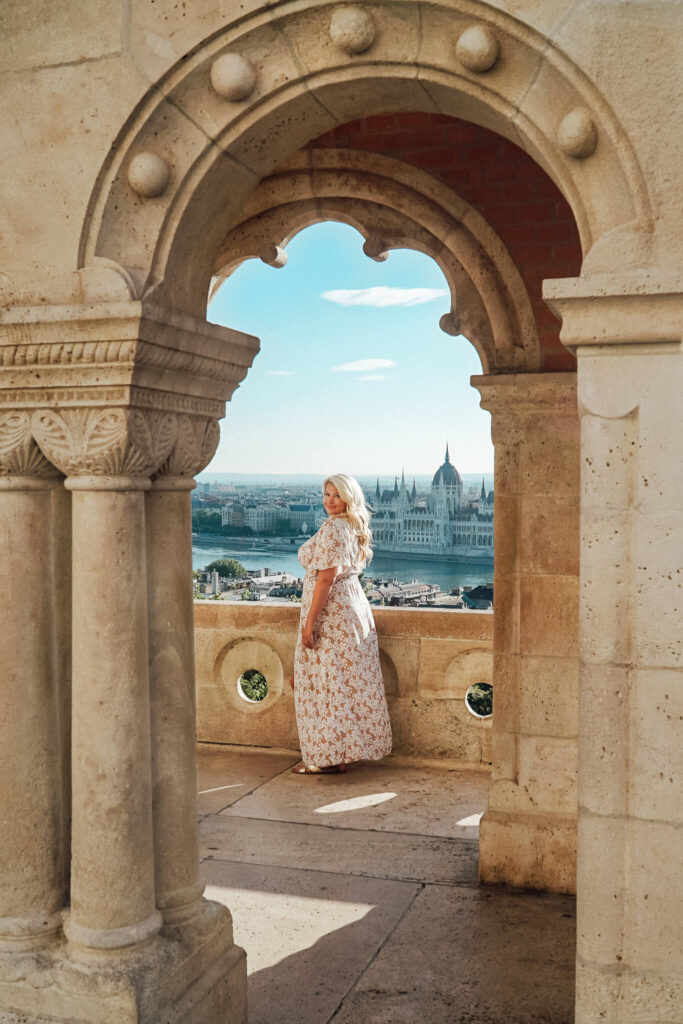
What to Pack for this Budapest Itinerary
Depending on the season you visit in, you’ll want to dress according to the weather! As I visited during the summer, I wore dresses with a lightweight sweater or jacket. For the winter, definitely pack lots of layers including jackets, sweaters, pants, boots or warm shoes, hats, scarves and gloves. Regardless of the season, you’ll want to bring comfortable walking shoes as many parts of the city are best explored on foot. And, don’t forget to pack swimsuits for the thermal baths!
And that’s a wrap on my ultimate Budapest itinerary in 2 days! Whether you’re visiting on a river cruise or planning a weekend getaway, I hope this itinerary helps you enjoy your visit to the Hungarian capital!
Leave a Reply